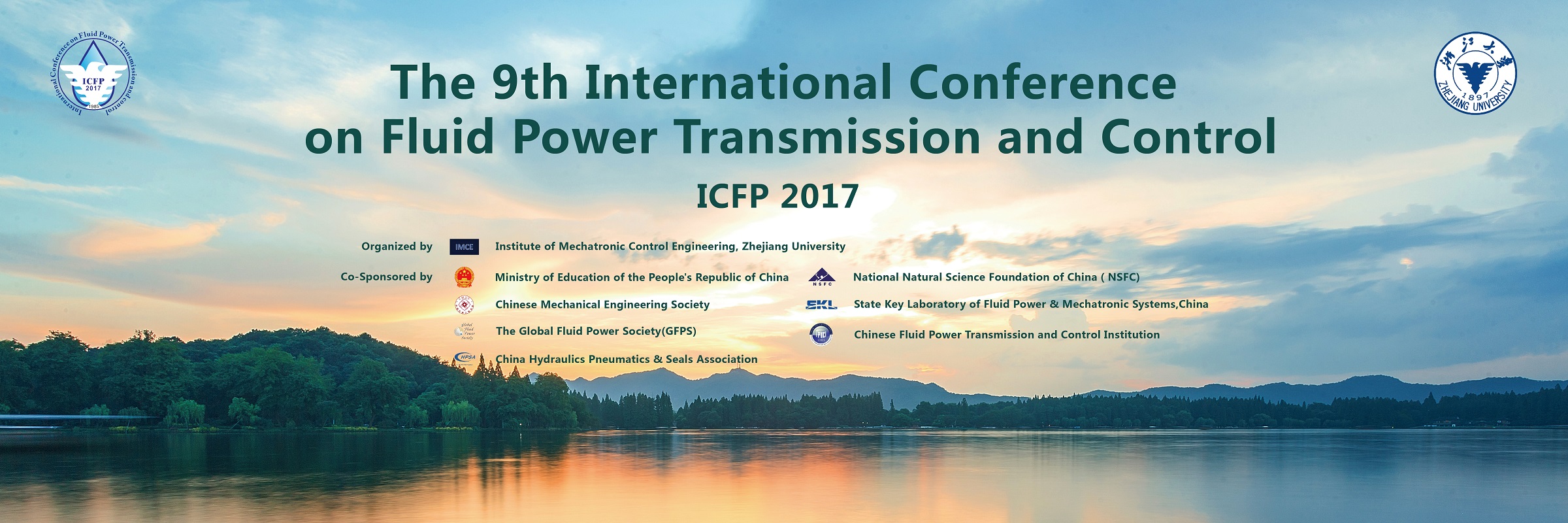
2017年4月11日-13日,第九届杭州流体传动及控制国际会议(The 9th International Conference on Fluid Power Transmission and Control,ICFP 2017)在杭州黄龙饭店顺利召开。浙江大学著名科学家路甬祥院士担任大会名誉主席,浙江大学机械工程学院院长杨华勇院士和浙江大学机械电子控制工程研究所所长王庆丰教授担任大会主席,同时,杨华勇院士担任组织委员会主席。
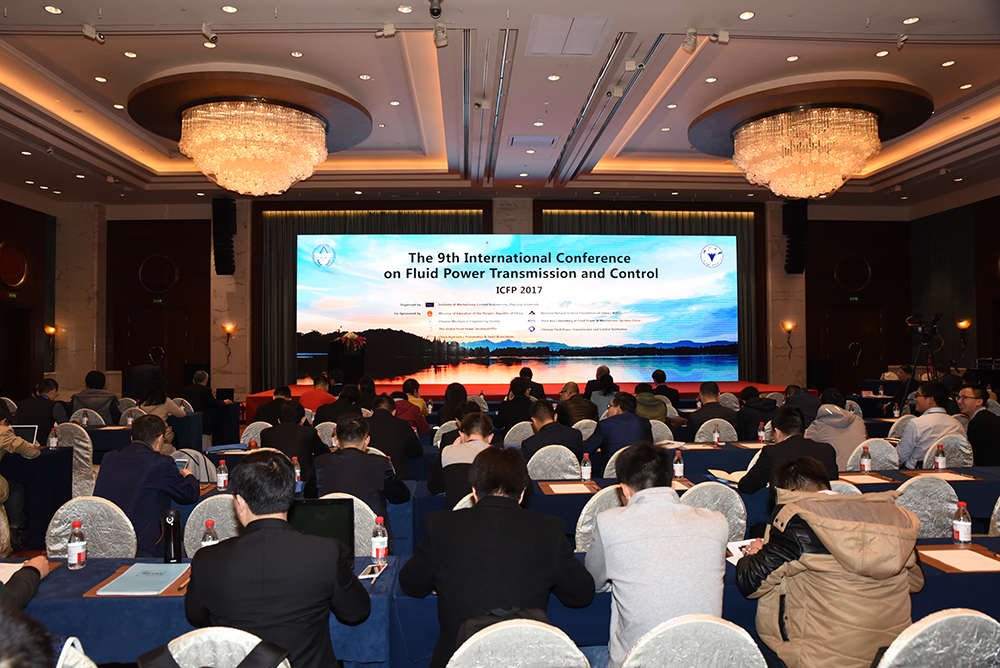
杭州流体传动及控制国际会议自1985年以来每四年举行一次,现已成功召开了八届,会议地点均在杭州,主办单位均为浙江大学。该会议已被誉为本领域的“奥林匹克”,是国际流体动力界公认的本学科领域四大重要国际会议之一。欧洲、北美、亚洲等本领域的著名学者和工业界人士均参与会议,已成为本学科领域学术交流的重要场合,在加强流体传动及控制技术领域内的国际学术交流,增进国内外同行的友谊与合作,促进我国流体传动及控制技术的发展等方面发挥了积极作用。
本次会议从2016年5月起发布征文通知,收到论文近90篇,经过审稿录用70余篇在会议期间宣读。截止至目前,共有来自中国、德国、英国、美国、芬兰、加拿大、日本、俄罗斯、塞尔维亚、中国台湾、韩国等共11个国家和地区的约170余名代表注册了本次会议。

合影
2017年4月11日上午8:30,浙江大学宋永华常务副校长、王庆丰教授(代表路甬祥院士)、杨华勇院士到会并致辞。开幕式后,由燕山大学的孔祥东教授和美国明尼苏达大学的Kim A. Stelson教授主持上午第一阶段的大会报告,浙江大学的杨华勇院士做了题为“Development of Electro-Hydraulic Driving Systems for the Hard Rock Tunnel Boring Machine”的大会报告,芬兰坦佩雷理工大学的Kalevi Huhtala教授做了题为“Towards Energy Efficient Autonomous Wheel Loader”的大会报告。茶歇期间,参会人员聚在一起喝茶聊天,增进交流。茶歇后,由浙江大学的付新教授和芬兰坦佩雷理工大学的Kalevi Huhtala教授主持上午第二阶段的大会报告,日本横滨国立大学的Kazushi Sanada教授做了题为“Modelling and Control of Fluid Power Systems”的大会报告,北京航空航天大学的焦宗夏教授做了题为“A Novel Self-powered Brake System and Anti-skid Control Method”的大会报告,莫斯科国立鲍曼技术大学的Petrov Alexey Igorevich副教授(代表Semenov Stanislav E.教授)做了题为“Application of Computational Fluid Dynamics Methods for Engineering and Theoretical Problems in the Field of Hydraulic Drive and Hydraulic Machines”的大会报告。精彩的大会主题报告引起了参会者的高度重视。浙江大学机械工程学院的教师及研究生也参与了会议的旁听和学术交流。
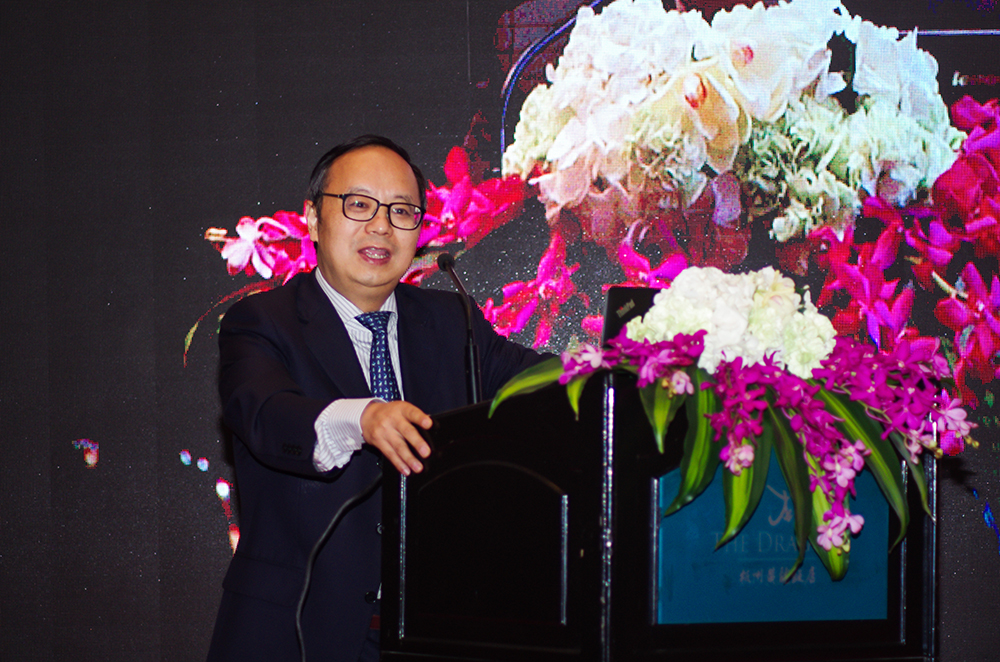
开幕式-宋永华教授
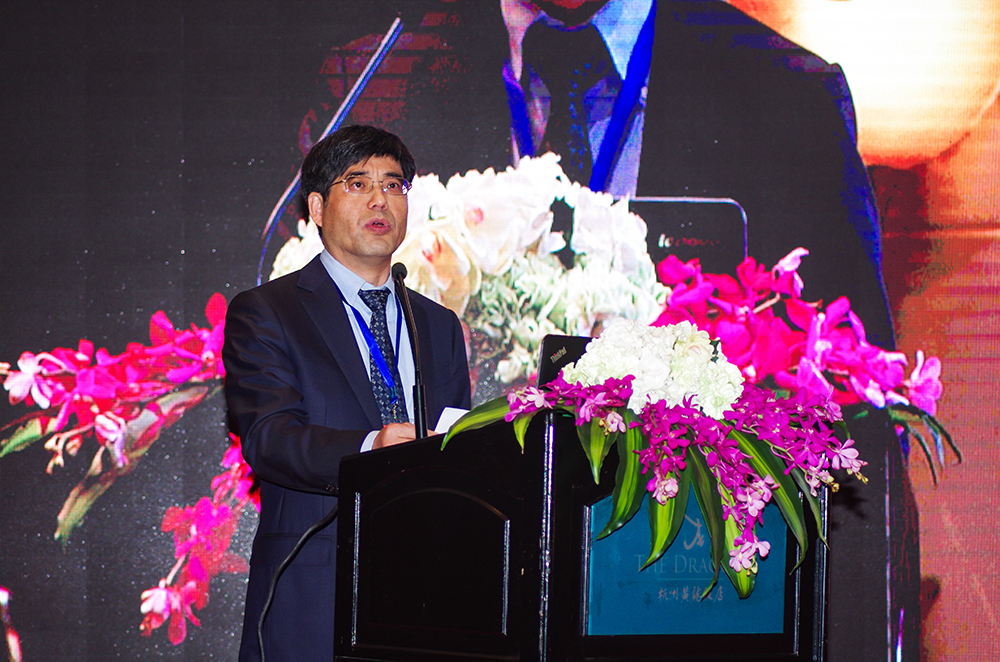
开幕式-王庆丰教授(代表路甬祥院士)
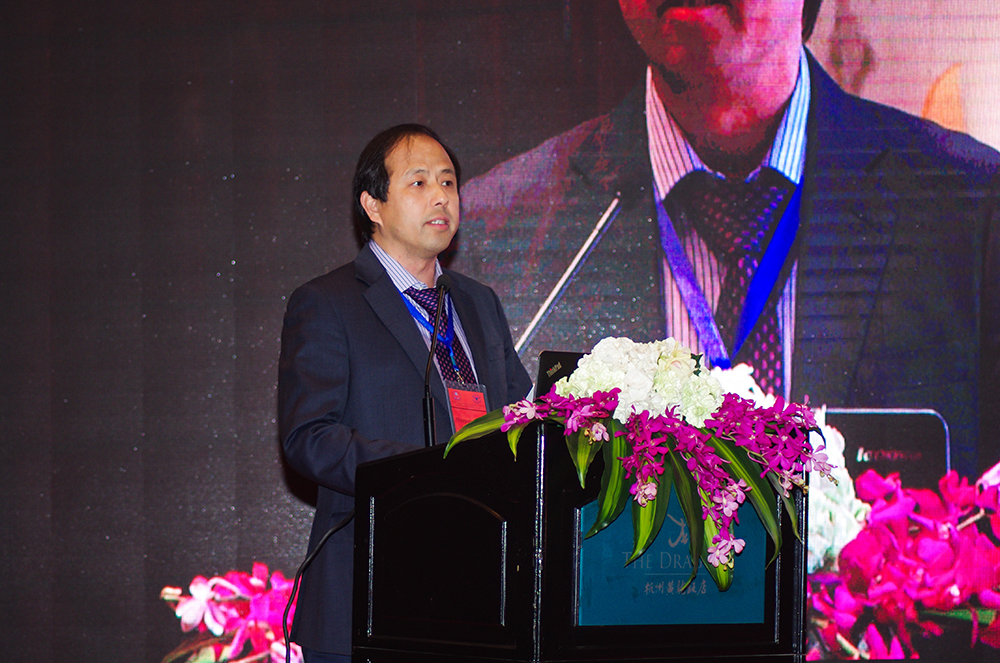
开幕式-杨华勇院士
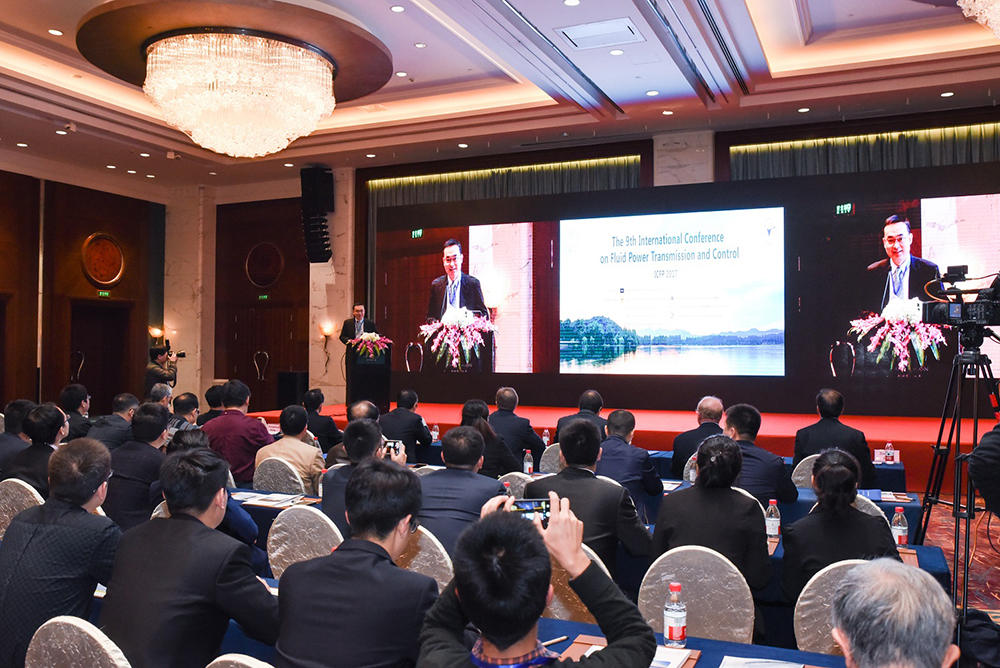
开幕式主持人-徐兵教授
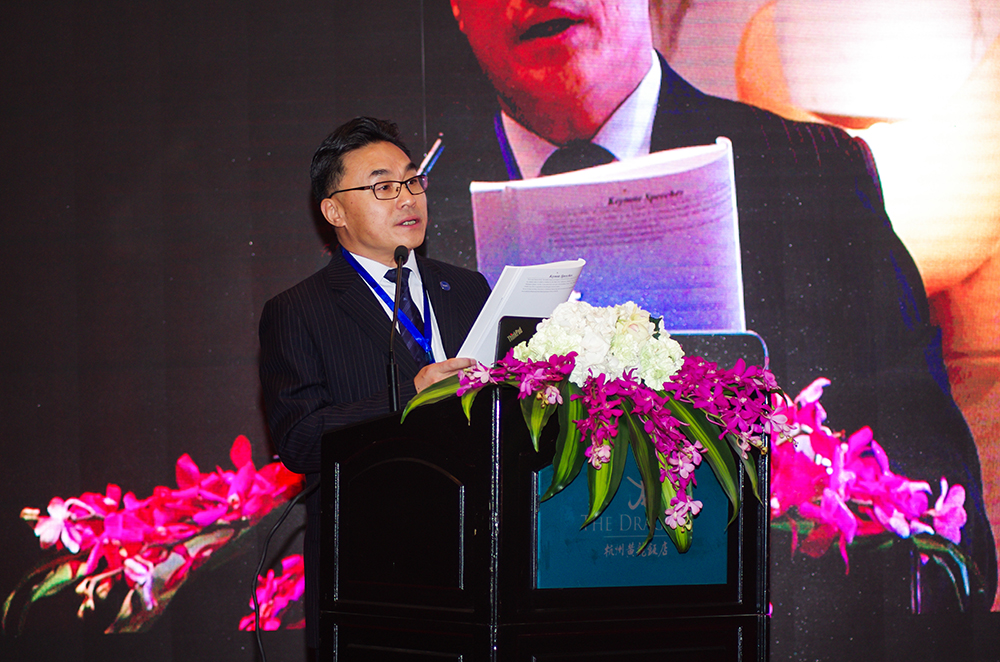
大会报告主持人:孔祥东教授
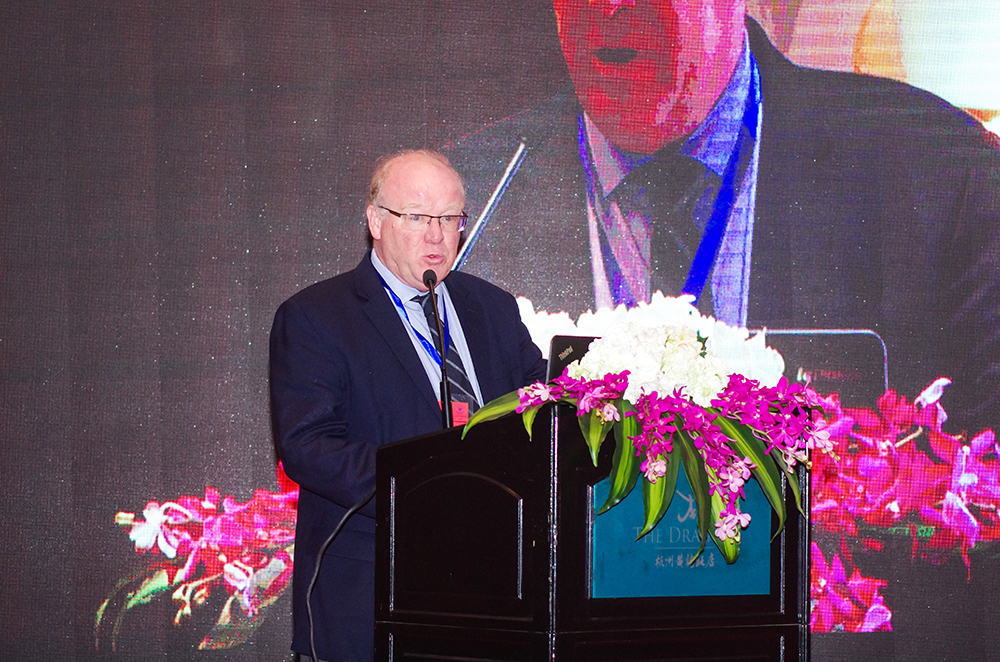
大会报告主持人:Kim A. Stelson教授
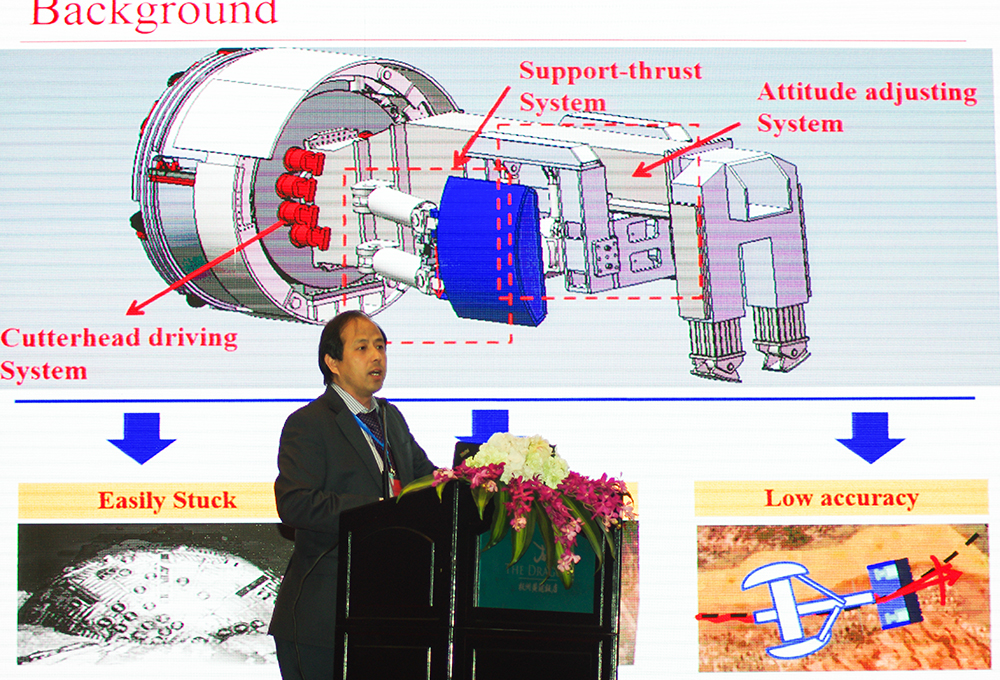
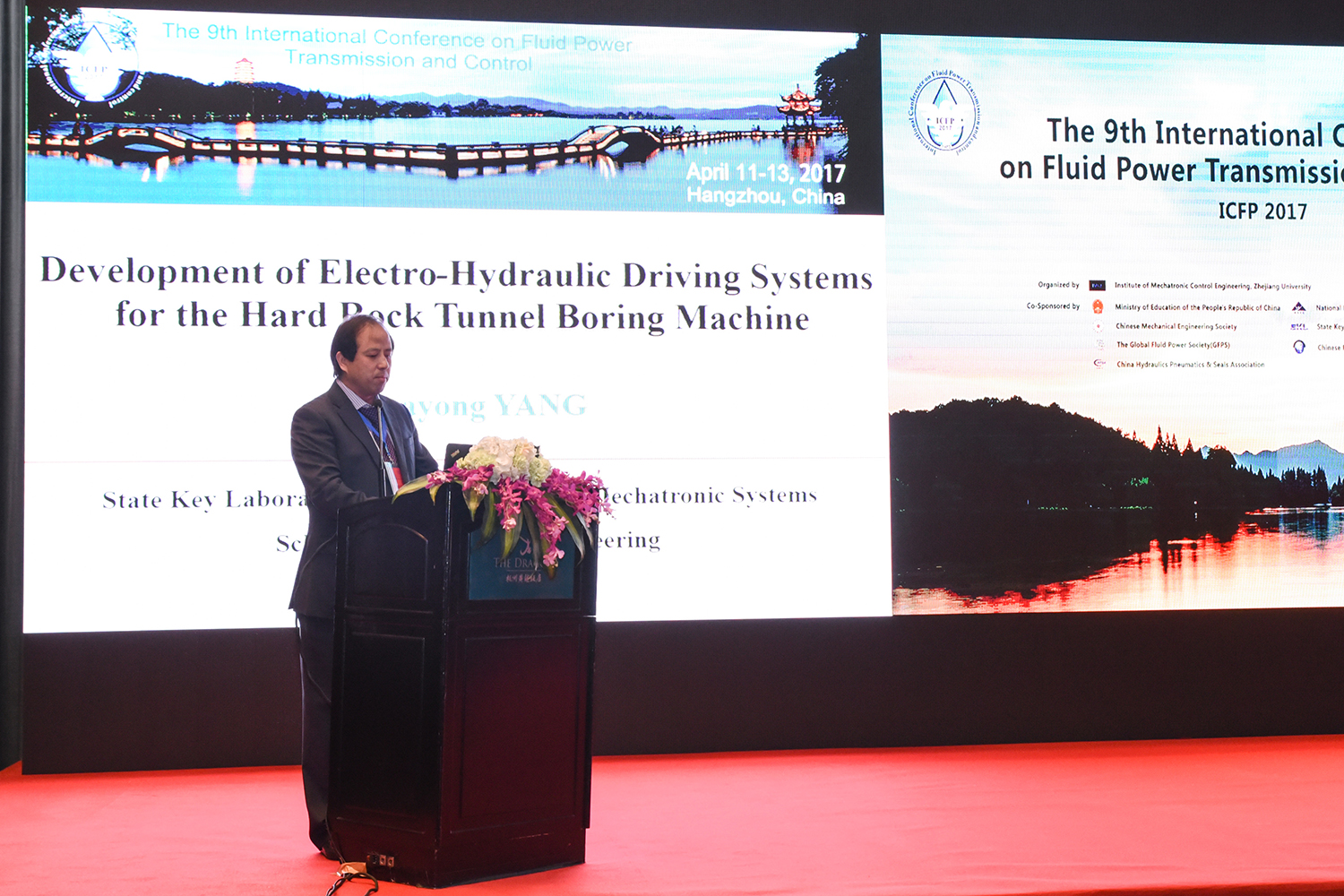
大会报告1-杨华勇院士
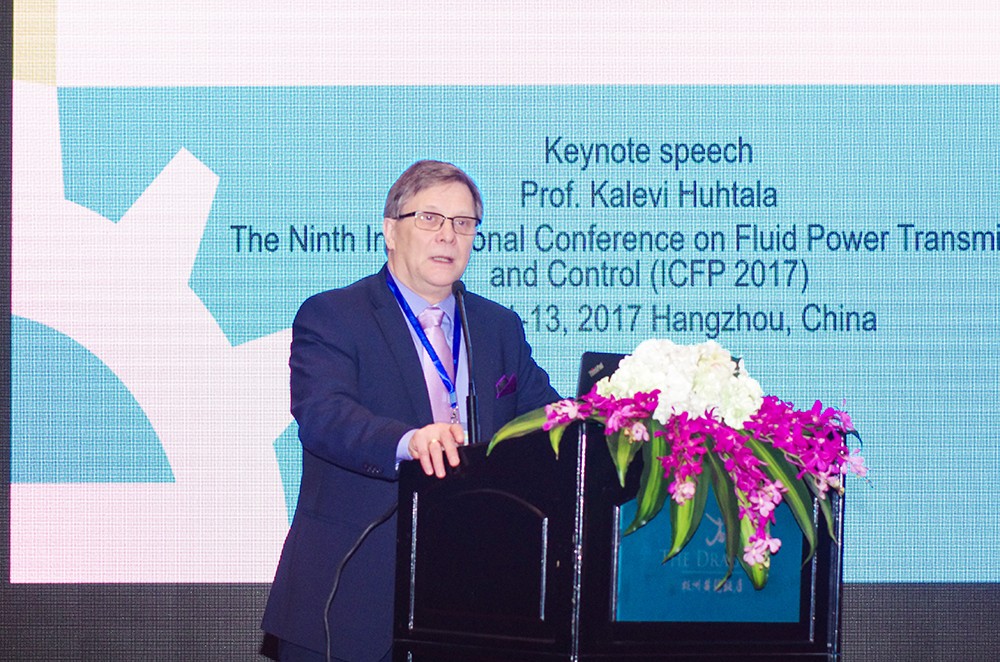
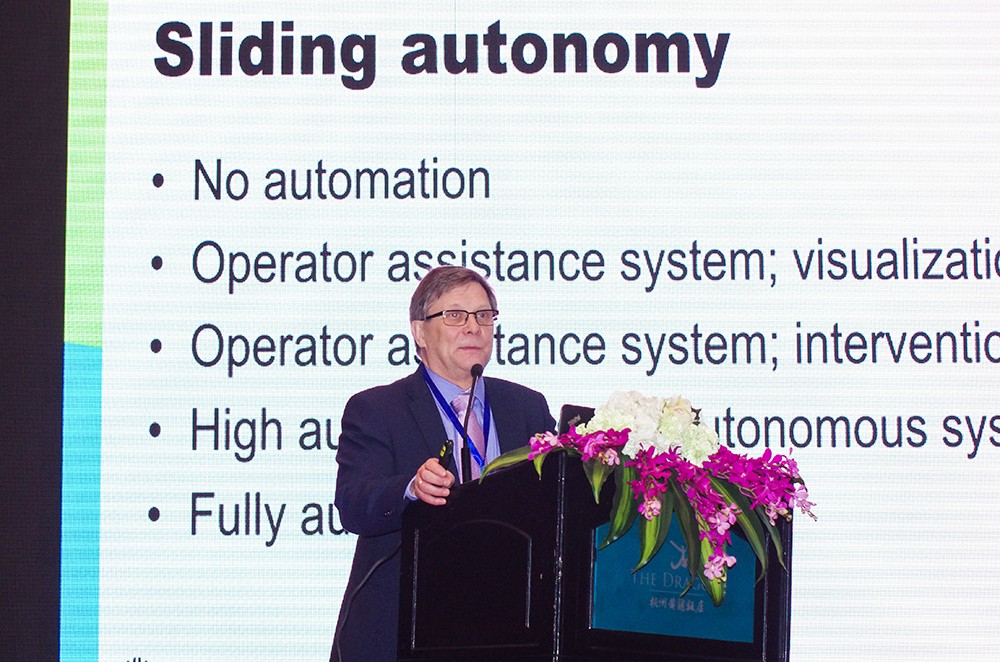
大会报告2-Kalevi Huhtala教授
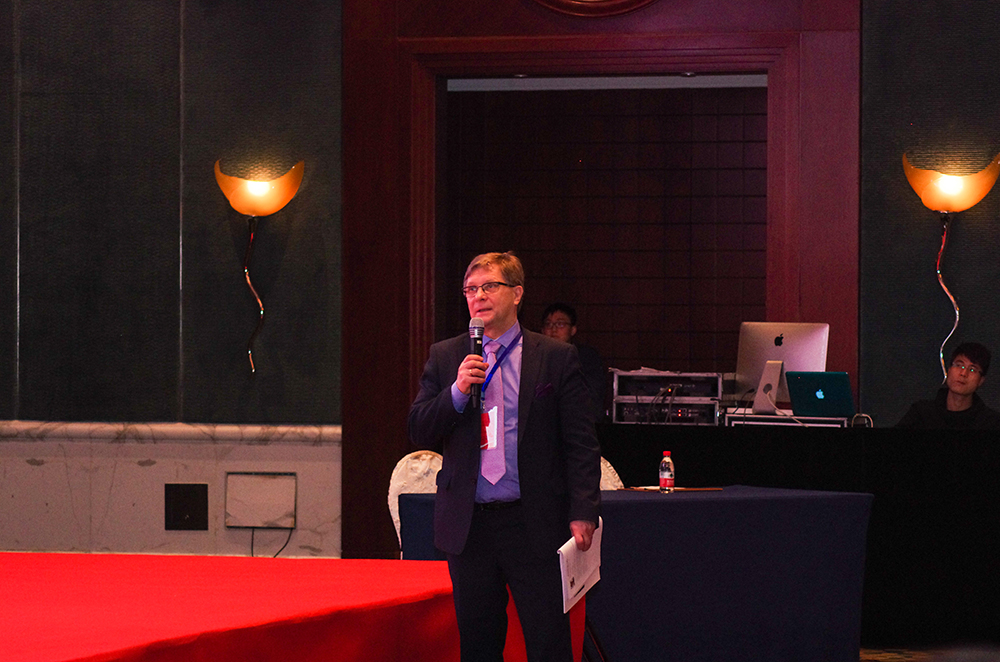
大会报告主持人:Kalevi Huhtala教授
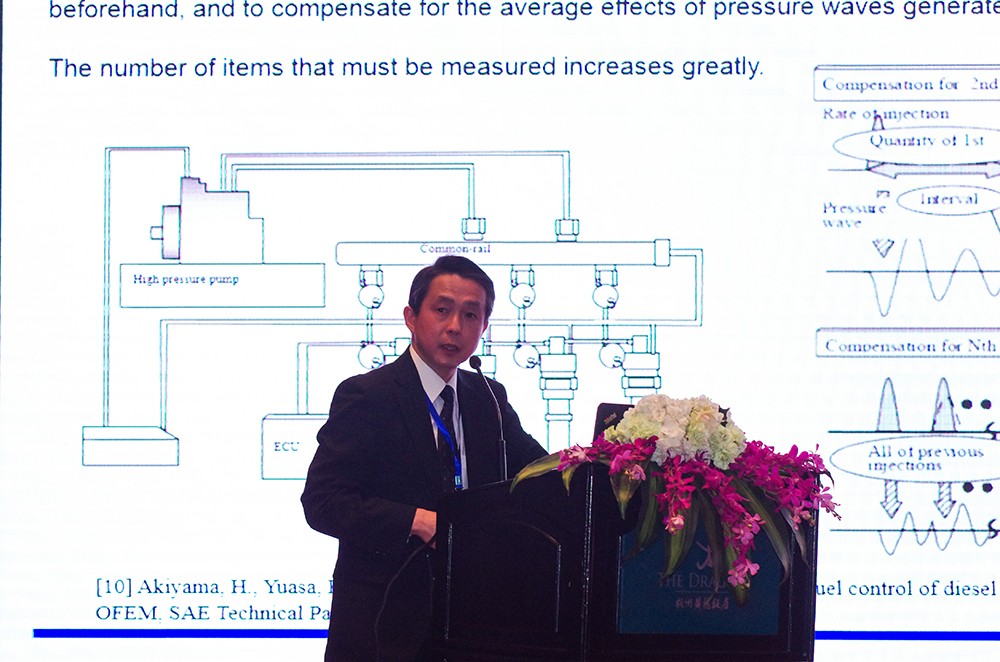
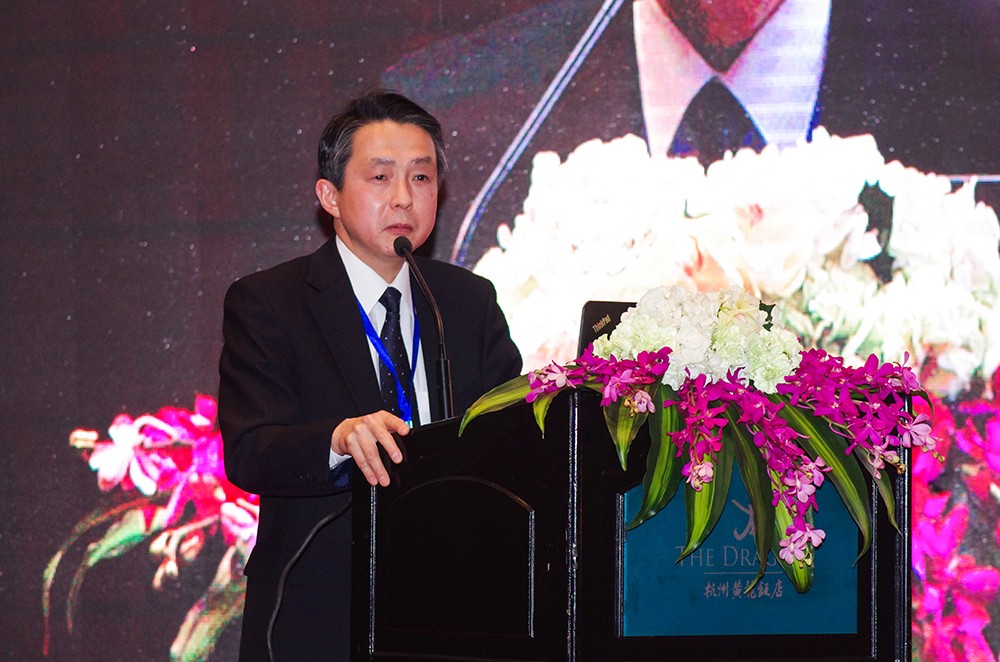
大会报告3-Kazushi Sanada教授
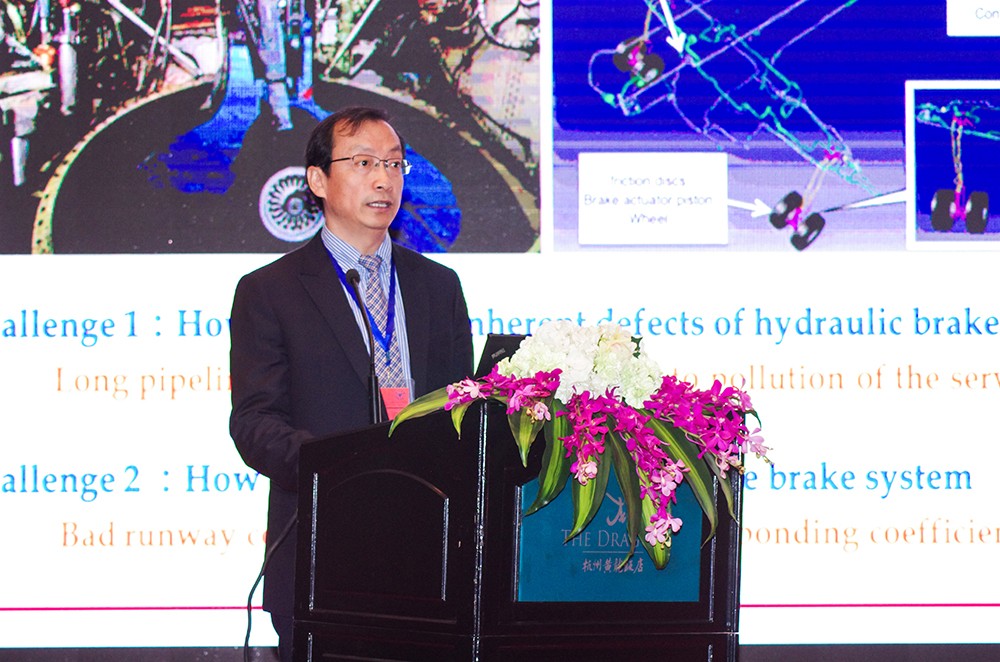
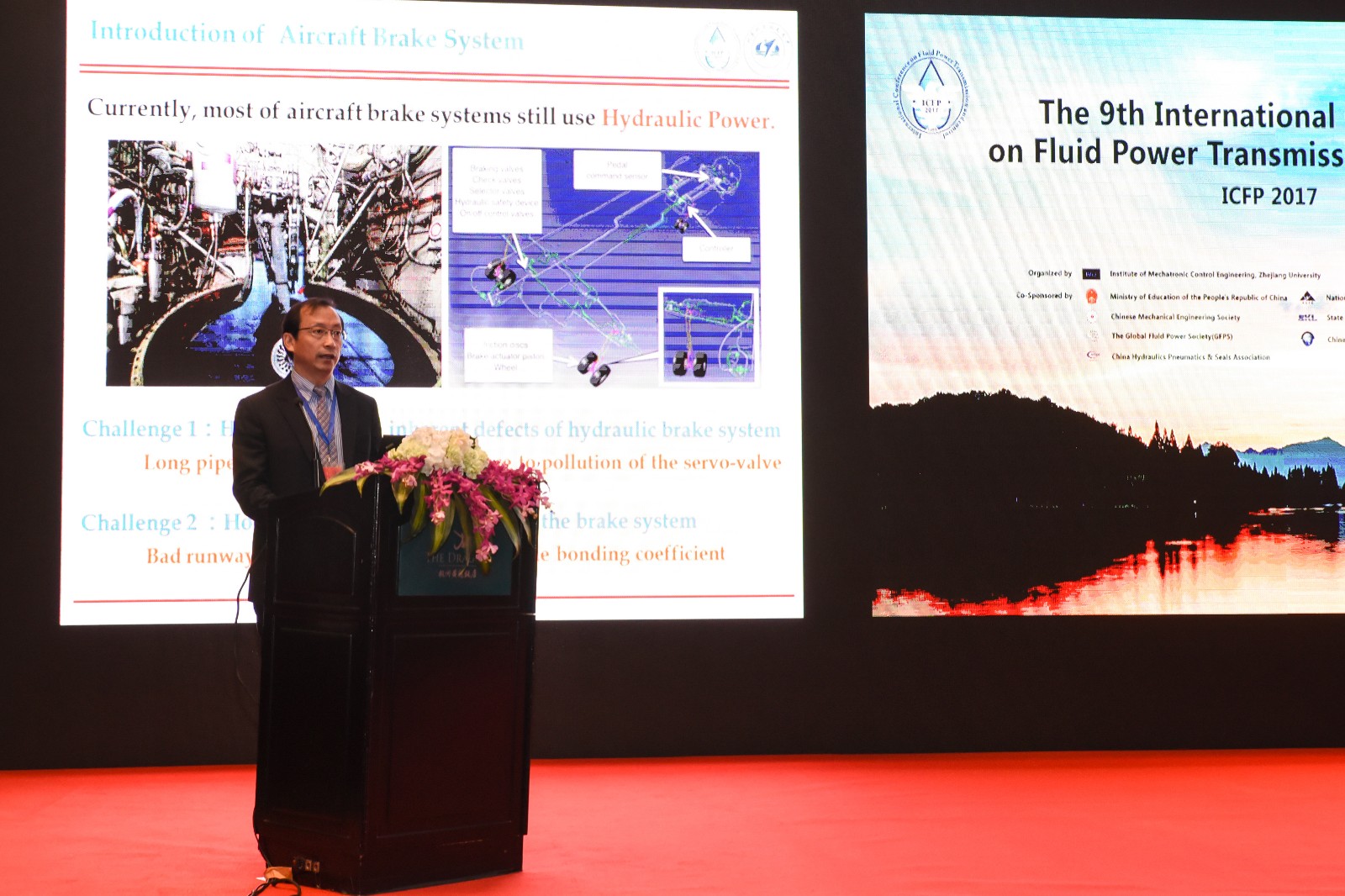
大会报告4-焦宗夏教授
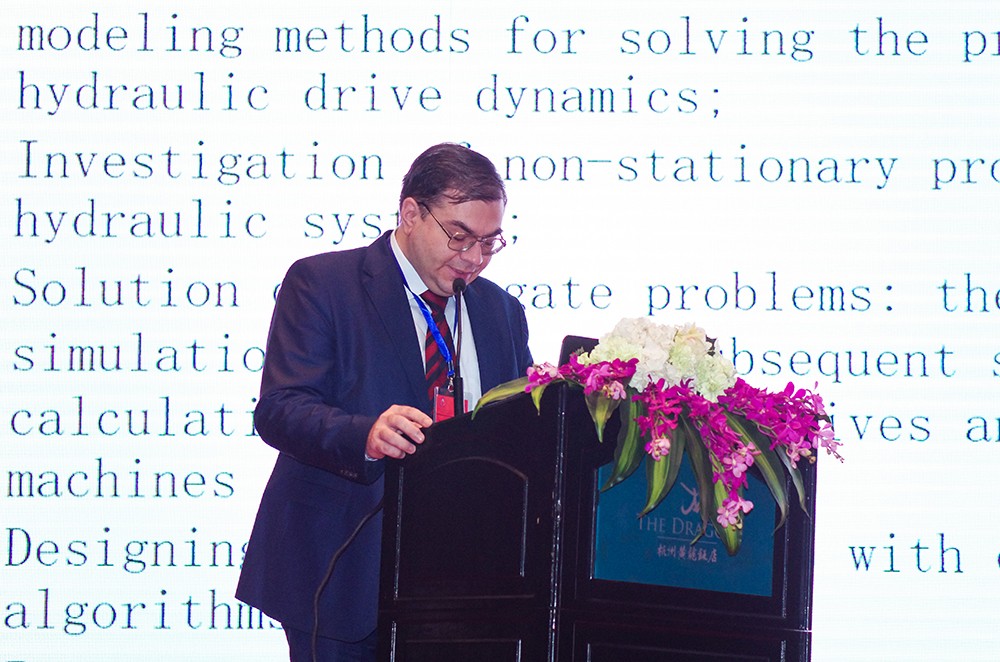
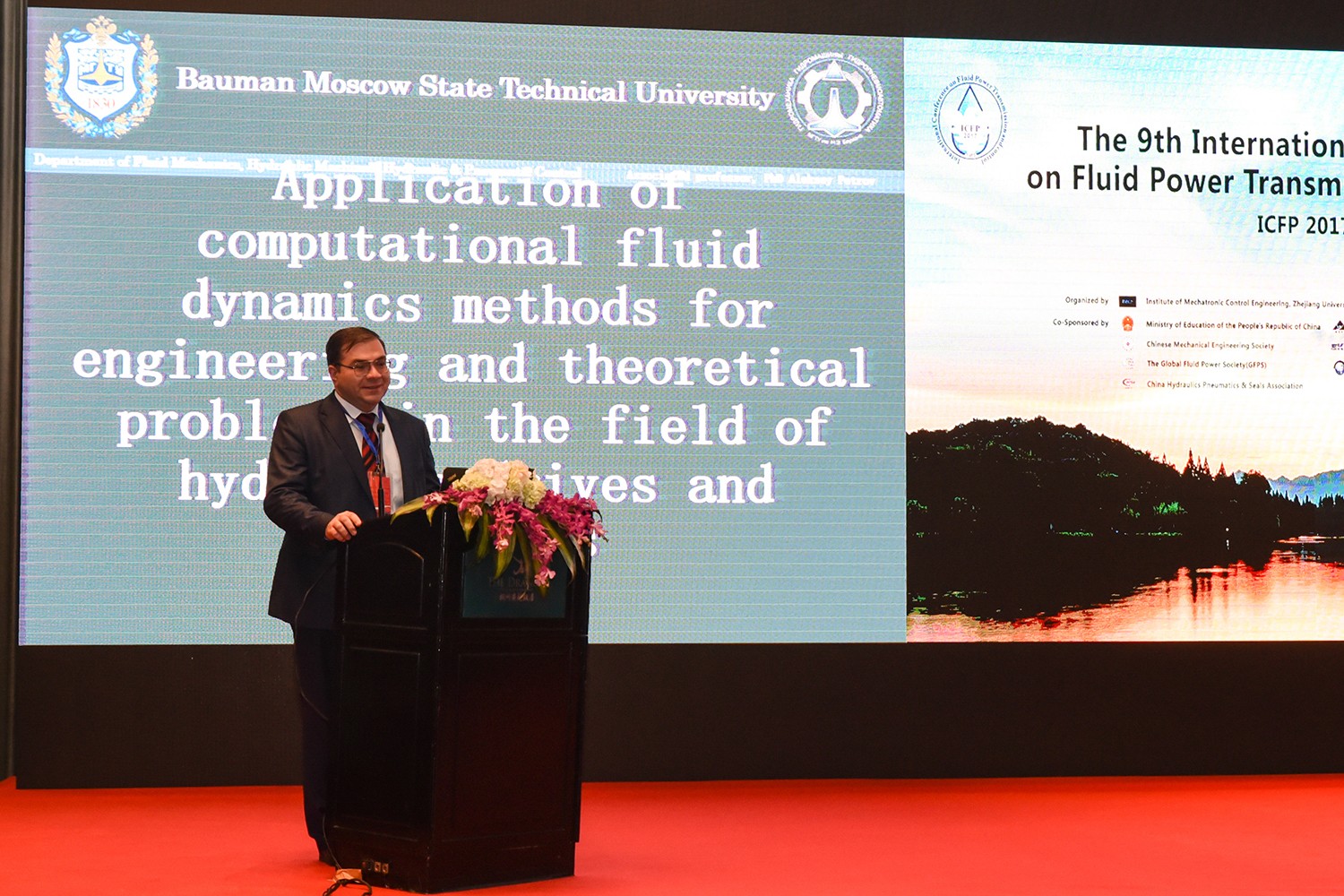
大会报告5-Petrov Alexey Igorevich副教授(代表Semenov Stanislav E.教授)
2017年4月11日下午14:00-17.30同时进行三个分会场的平行报告。分会场一的主题为“Development of Hydraulic Components”,分会场主席为上海交通大学的刘成良教授、日本横滨国立大学的Kazushi Sanada教授、北京航空航天大学的刘少萍教授、日本上智大学的Yutaka Tanaka教授;分会场二的主题为“Innovation in Hydraulic Systems”,分会场主席为兰州理工大学的冀宏教授、莫斯科国立鲍曼技术大学的Petrov Alexey Igorevich副教授、浙江大学的邹俊教授、美国的Michael J. Gust博士;分会场三的主题为“Simulation”,分会场主席为哈尔滨工业大学的李松晶教授、台湾的Mao-Hsiung Chiang教授、燕山大学高殿荣教授、芬兰坦佩雷理工大学的Kalevi Huhtala教授。
2017年4月12日上午9:00,由浙江大学的杨华勇院士和北京理工大学项昌乐教授主持上午第一阶段的大会报告,德国亚琛工业大学的Hubertus Murrenhoff教授做了题为“Trends for Hybrid Systems in Excavators”的大会报告,英国巴斯大学的Andrew Plummer教授做了题为“Additive Manufacture of Hydraulic Components”的大会报告。茶歇后,由德国亚琛工业大学的Hubertus Murrenhoff教授和英国巴斯大学的Andrew Plummer教授主持上午第二阶段的大会报告,美国明尼苏达大学的Kim A. Stelson教授做了题为“Hydrostatic Transmission for Wind Power”的大会报告,浙江大学的徐兵教授做了题为“Design and Test Rig for High Rotation Speed Axial Piston Pumps”的大会报告,日本东京工业大学的Ken Ichiryu教授做了题为“My Attempt to the Robot Revolution”的大会报告。
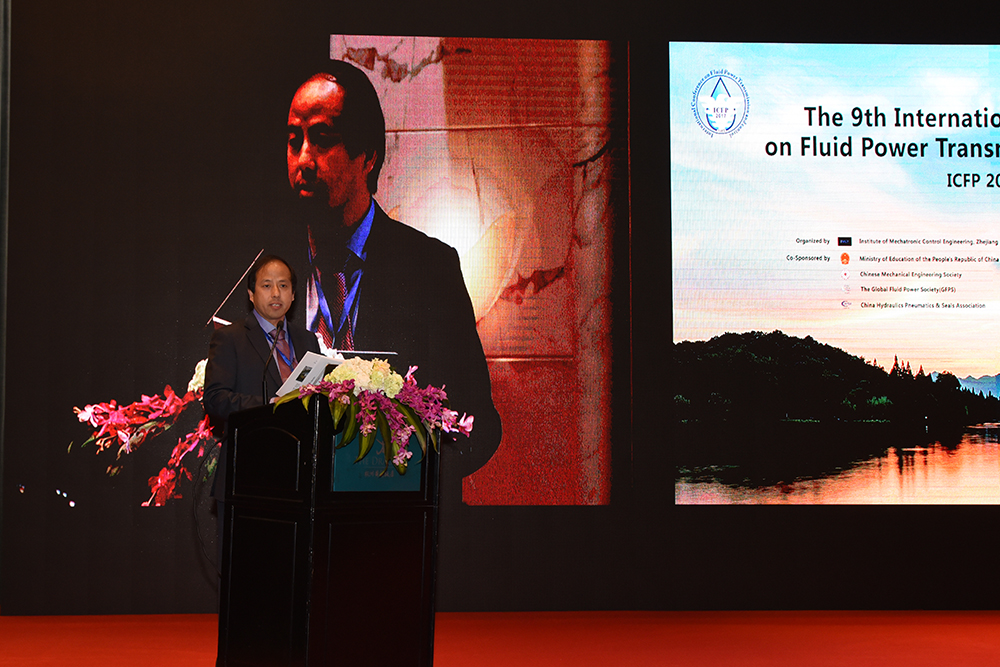
大会报告主持人:杨华勇院士
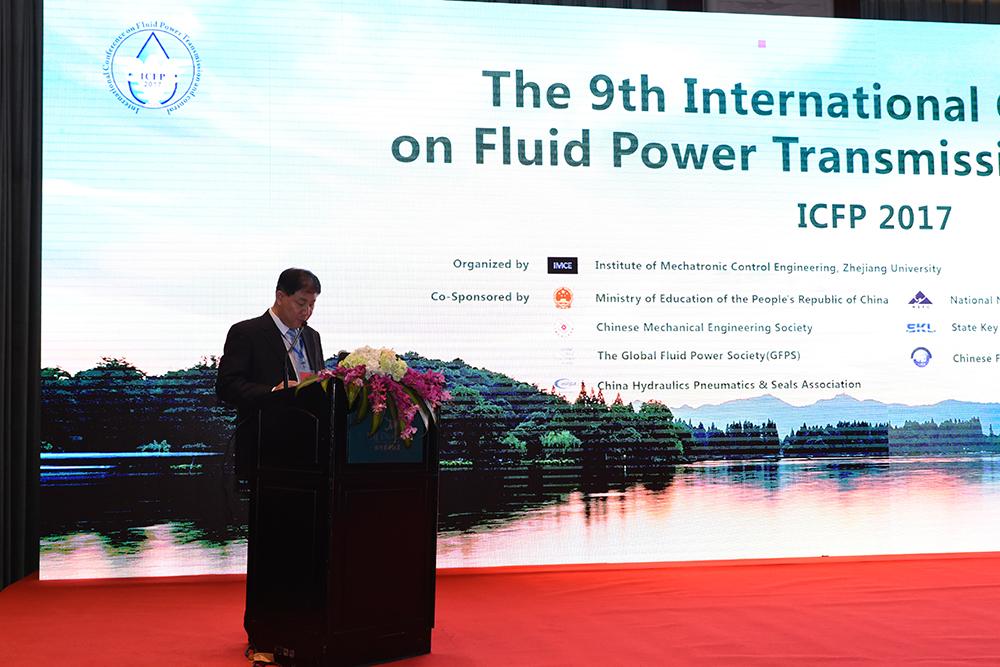
大会报告主持人:项昌乐教授
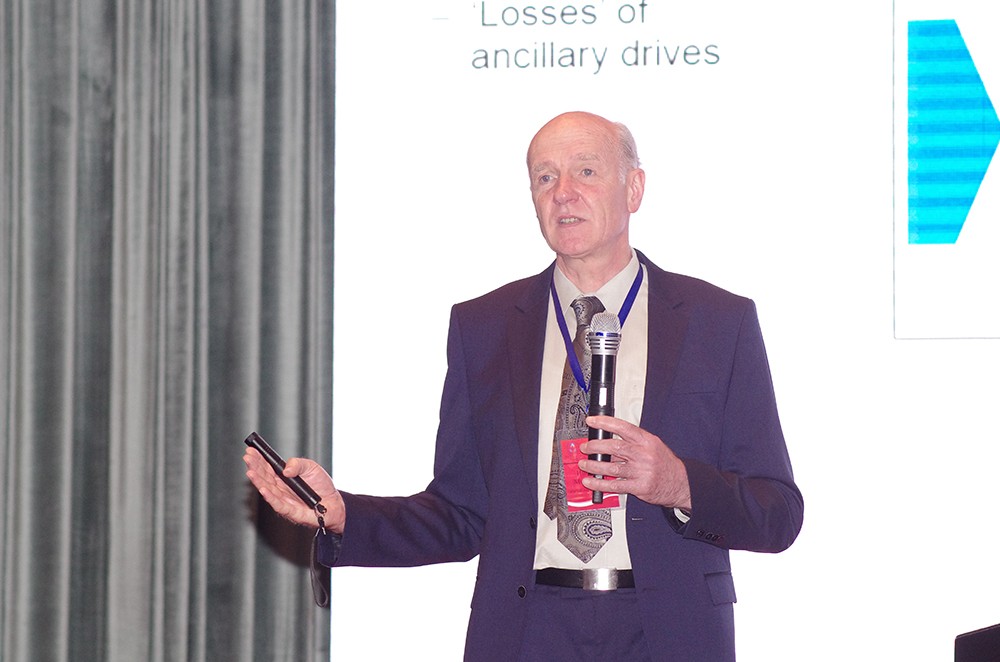
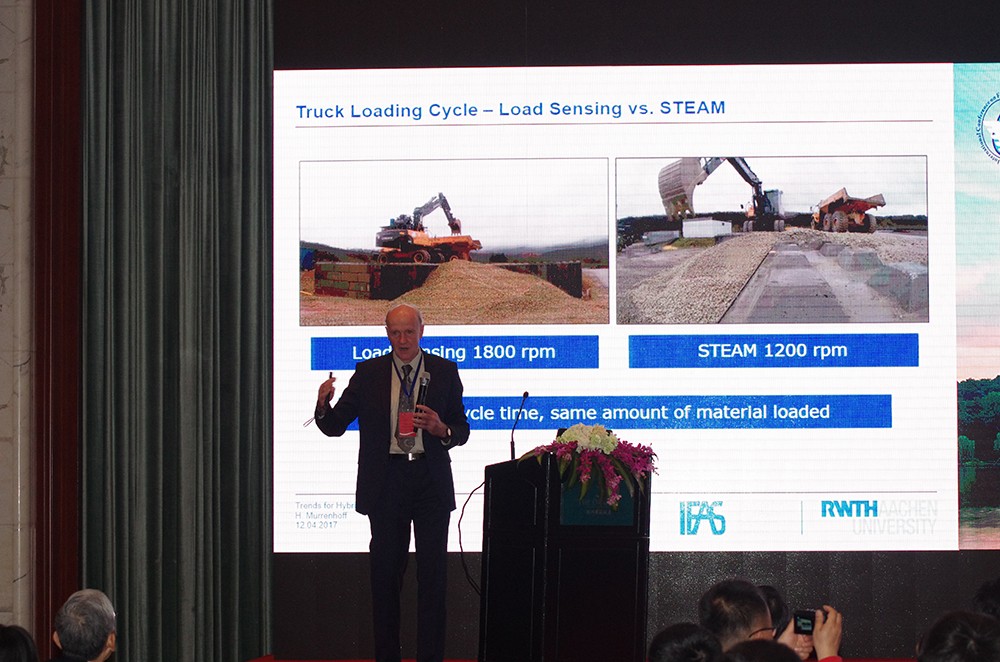
大会报告6-Hubertus Murrenhoff教授
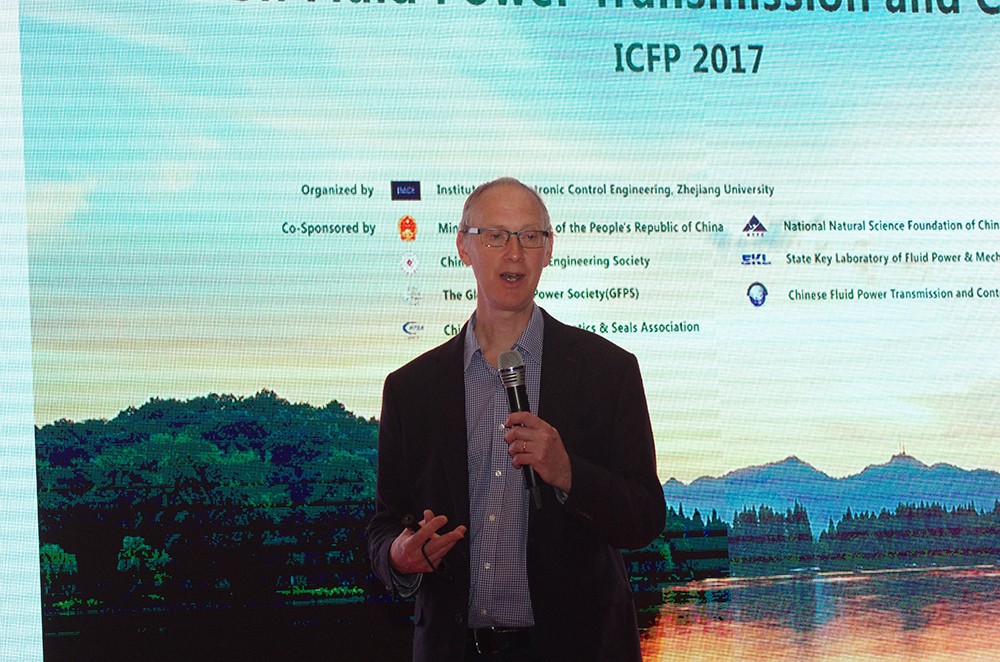
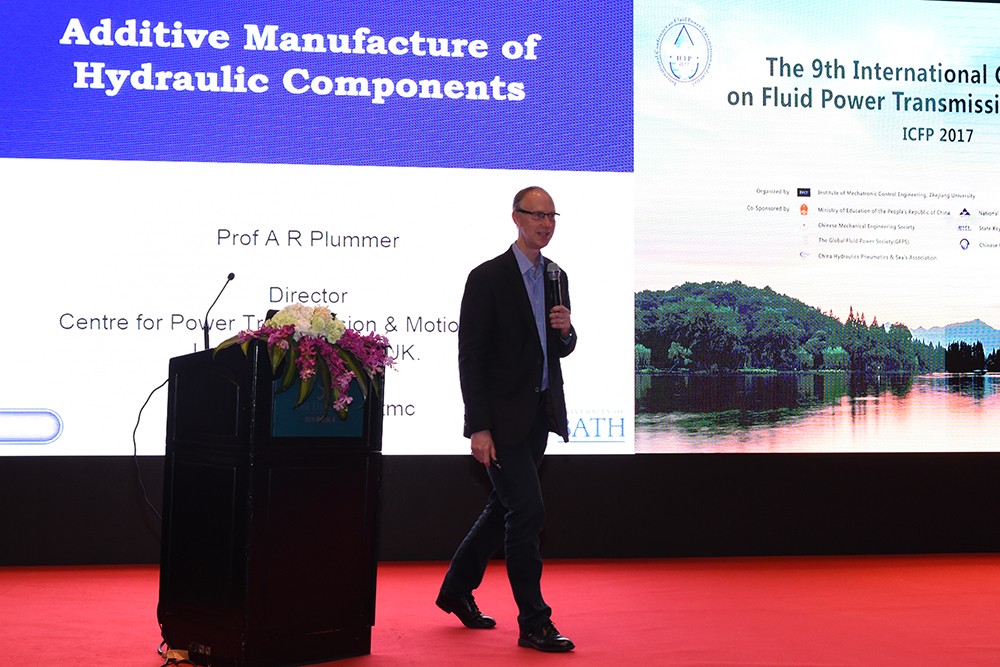
大会报告7-Andrew Plummer教授
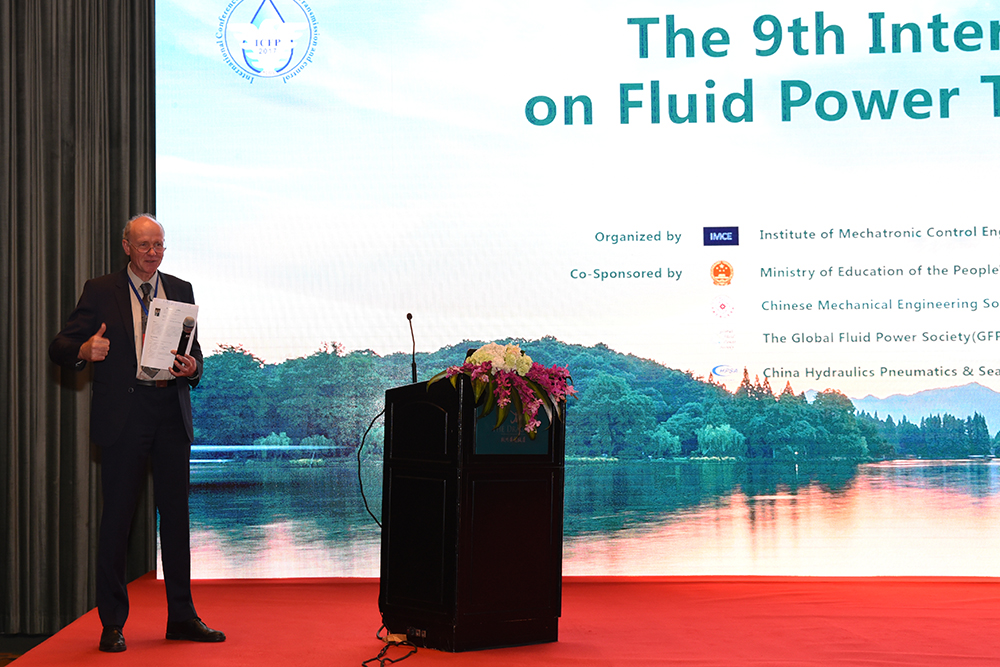
大会报告主持人:Hubertus Murrenhoff教授
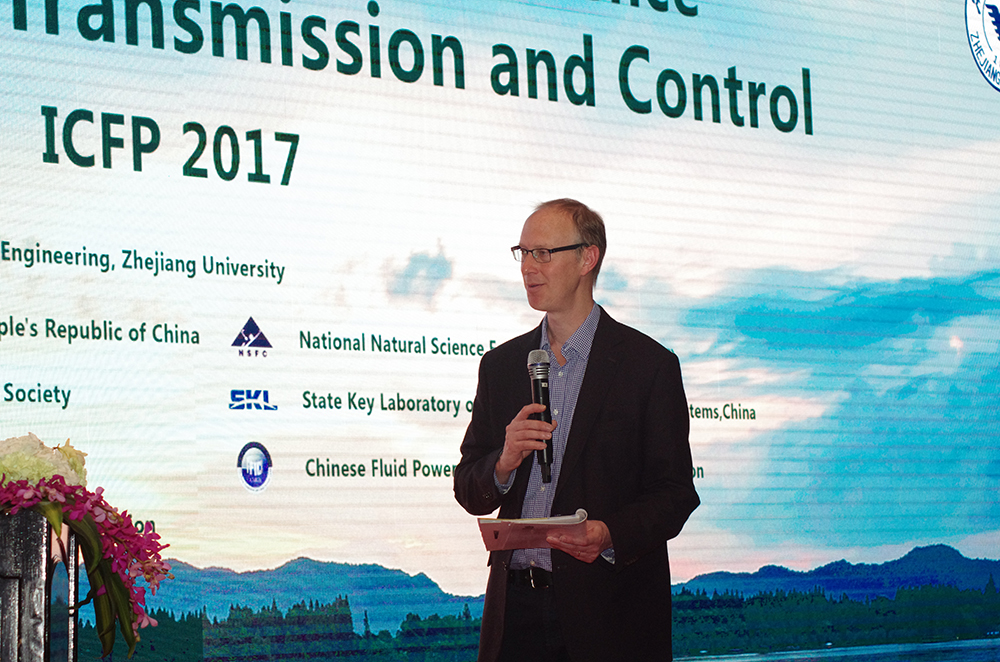
大会报告主持人:Andrew Plummer教授
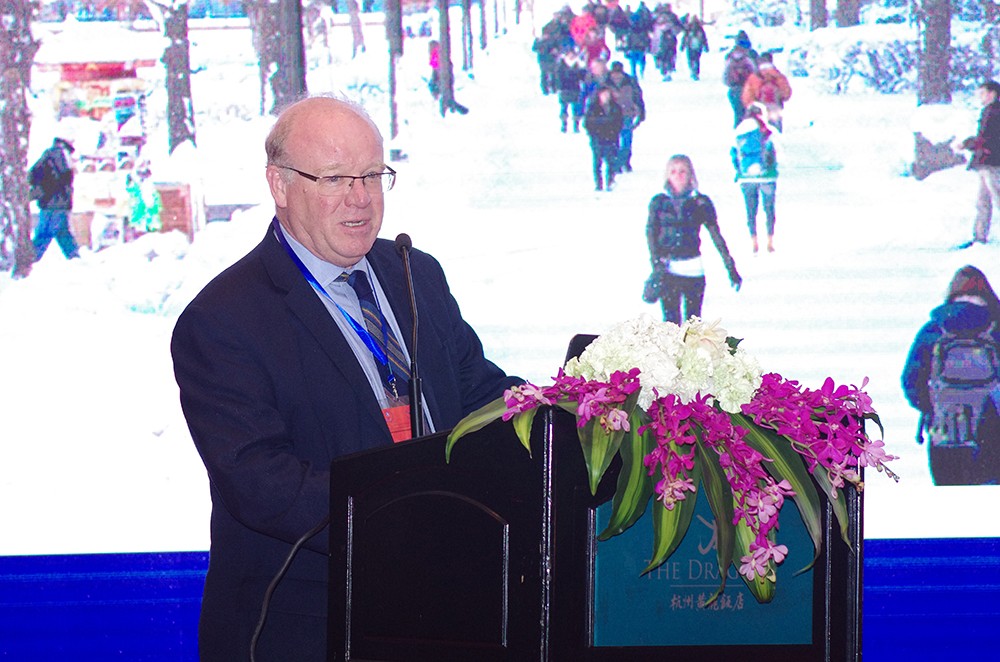
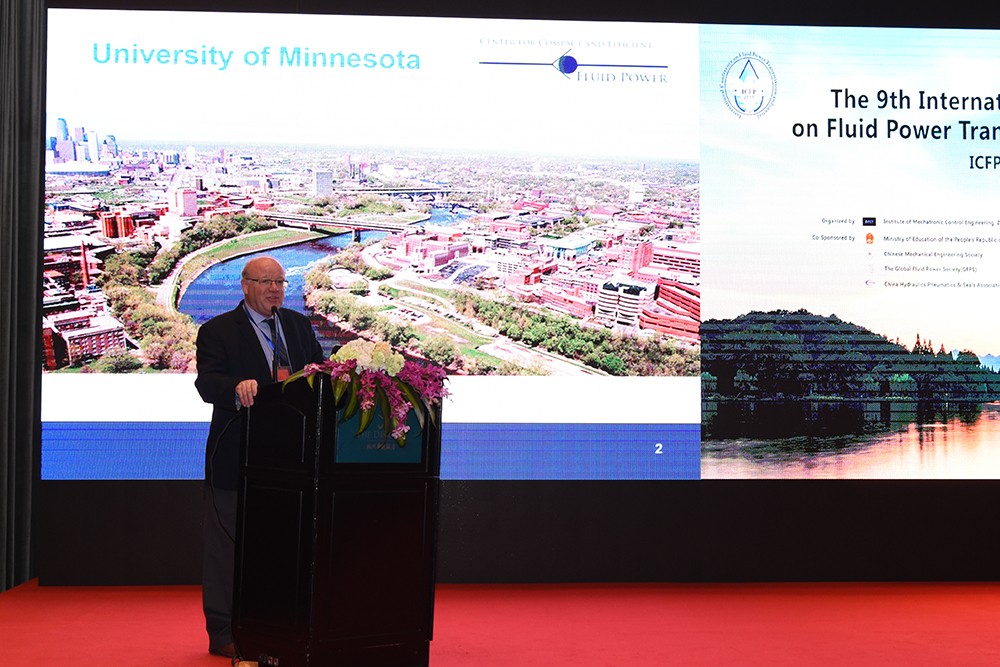
大会报告8-Kim A. Stelson教授
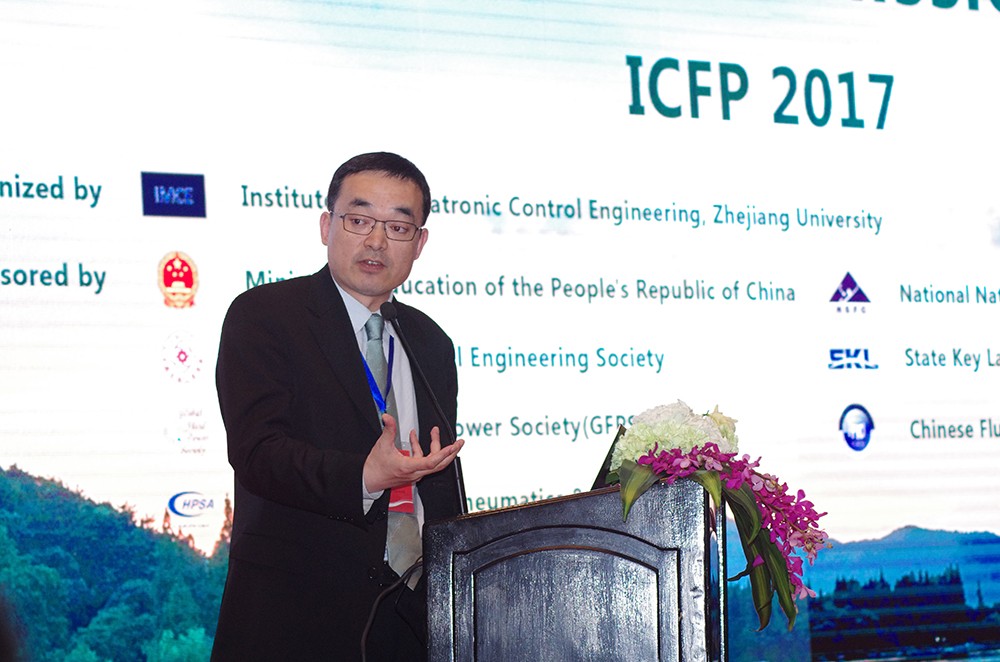
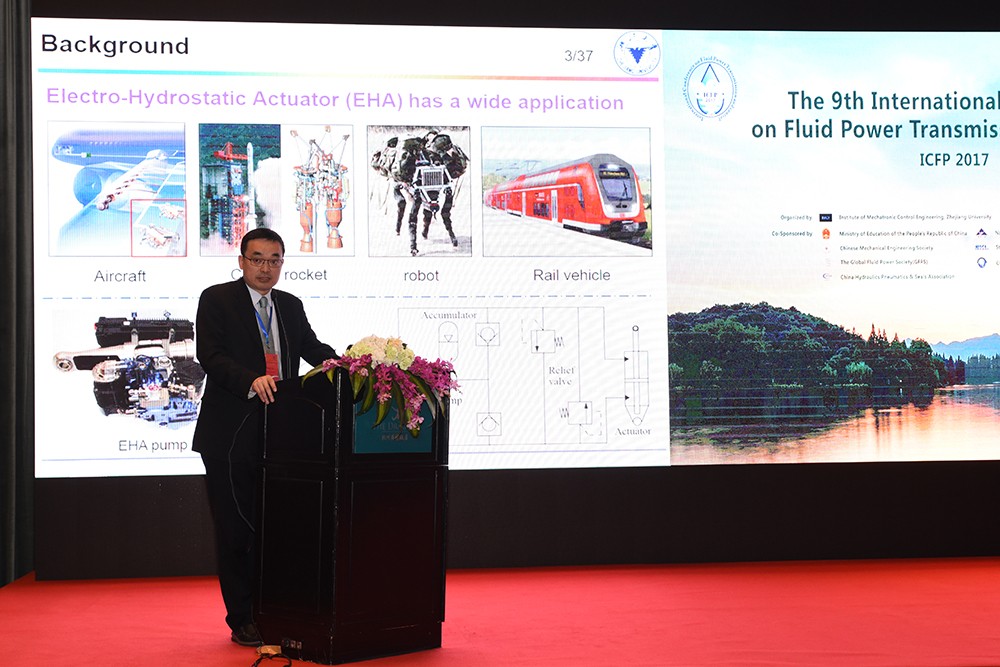
大会报告9-徐兵教授
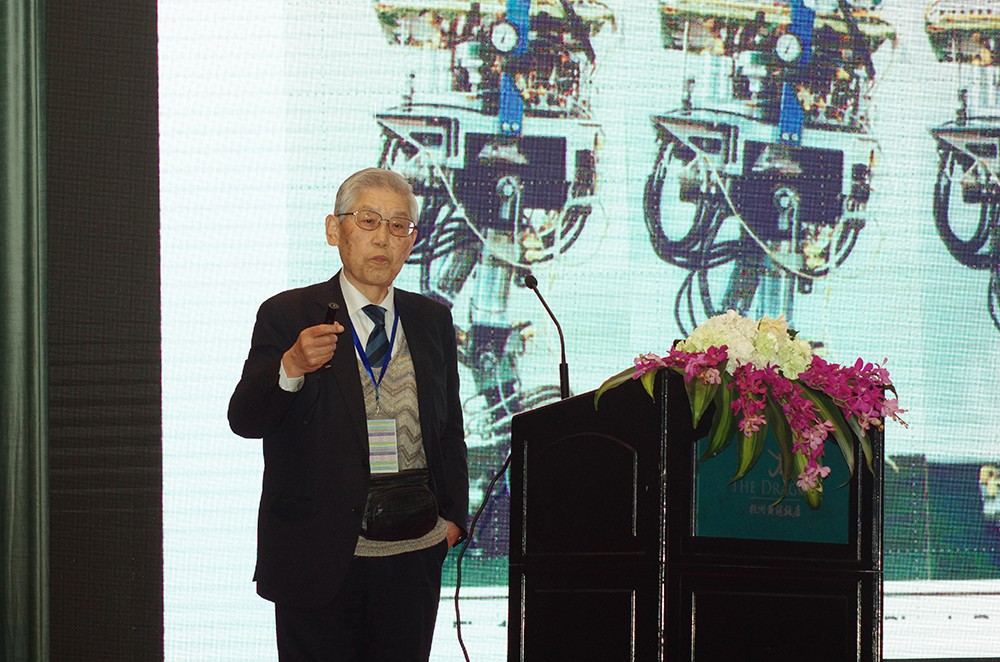
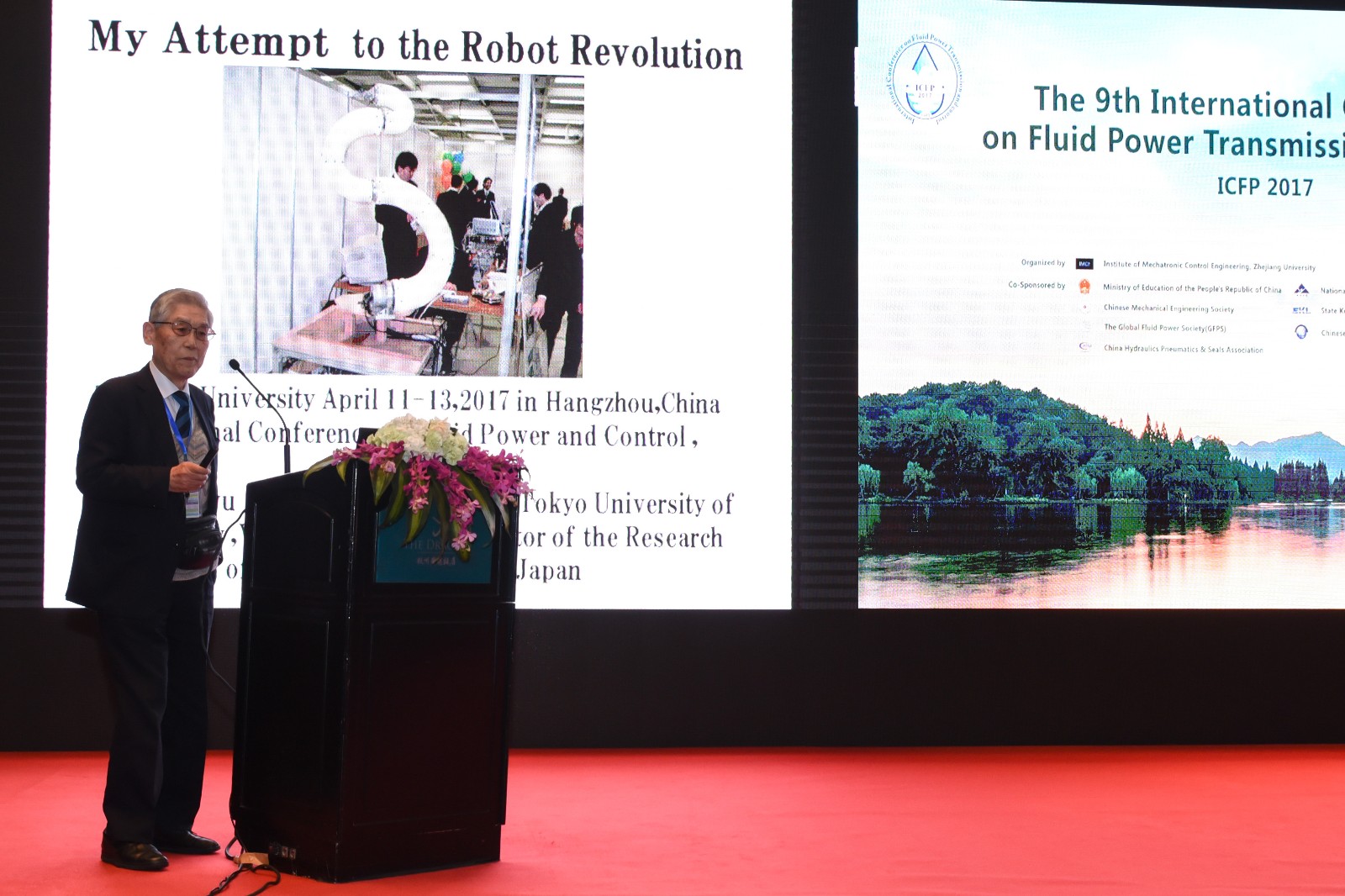
大会报告10-Ken Ichiryu教授
2017年4月12日下午14:00-17.30同时进行三个分会场的平行报告。分会场一的主题为“Development of Hydraulic Components”,分会场主席为同济大学的訚耀保教授、英国巴斯大学的Andrew Plummer教授、华中科技大学的刘银水教授、塞尔维亚贝尔格莱德大学的Radovan Petrovic教授;分会场二的主题为“Innovation in Hydraulic Systems”,分会场主席为北京航空航天大学的蔡茂林教授、美国明尼苏达大学的Kim A. Stelson教授、浙江大学的欧阳小平教授、加拿大沙斯卡曲湾大学的Travis Viens教授;分会场三的主题为“Simulation”,分会场主席为浙江大学的李伟教授、德国亚琛工业大学的Hubertus Murrenhoff教授、大连海事大学弓永军教授、莫斯科国立鲍曼技术大学的Lomakin Vladimir教授。
2017年4月12日晚上18:30开始晚宴和颁奖典礼,由ICFP2017会议秘书长邹俊教授主持。在参会人员享用晚宴的过程中,邹俊教授对这次会议做了简短的总结,随后欣赏了浙江大学学生带来的名族舞蹈和乐器演奏。期间,德国亚琛工业大学的Hubertus Murrenhoff教授介绍了Global Fluid Power Society并授予来自英国巴斯大学的“Relay Control of A Morphing Tensegrity Structure with Distributed Pneumatic Actuation”论文作者GFPS Best Paper Award。接着,大家欣赏了ICFP志愿者带来的双节棍表演。随后,杨华勇院士授予来自瑞典隆德大学的“A Comparison Study on Structures and Fluid Dynamic Characteristics of Three Different Pilot-Control Globe Valves”论文作者ICFP2017 Best Paper Award,王庆丰教授授予来自浙江大学的“Characteristics of Cavitation in Tube”论文作者ICFP2017 Best Paper Award。欣赏完国粹川剧变脸后,孔祥东教授介绍了即将召开的一些流体会议,最后,邹俊教授宣布第九届杭州流体传动及控制国际会议(The 9th International Conference on Fluid Power Transmission and Control,ICFP 2017)圆满闭幕!
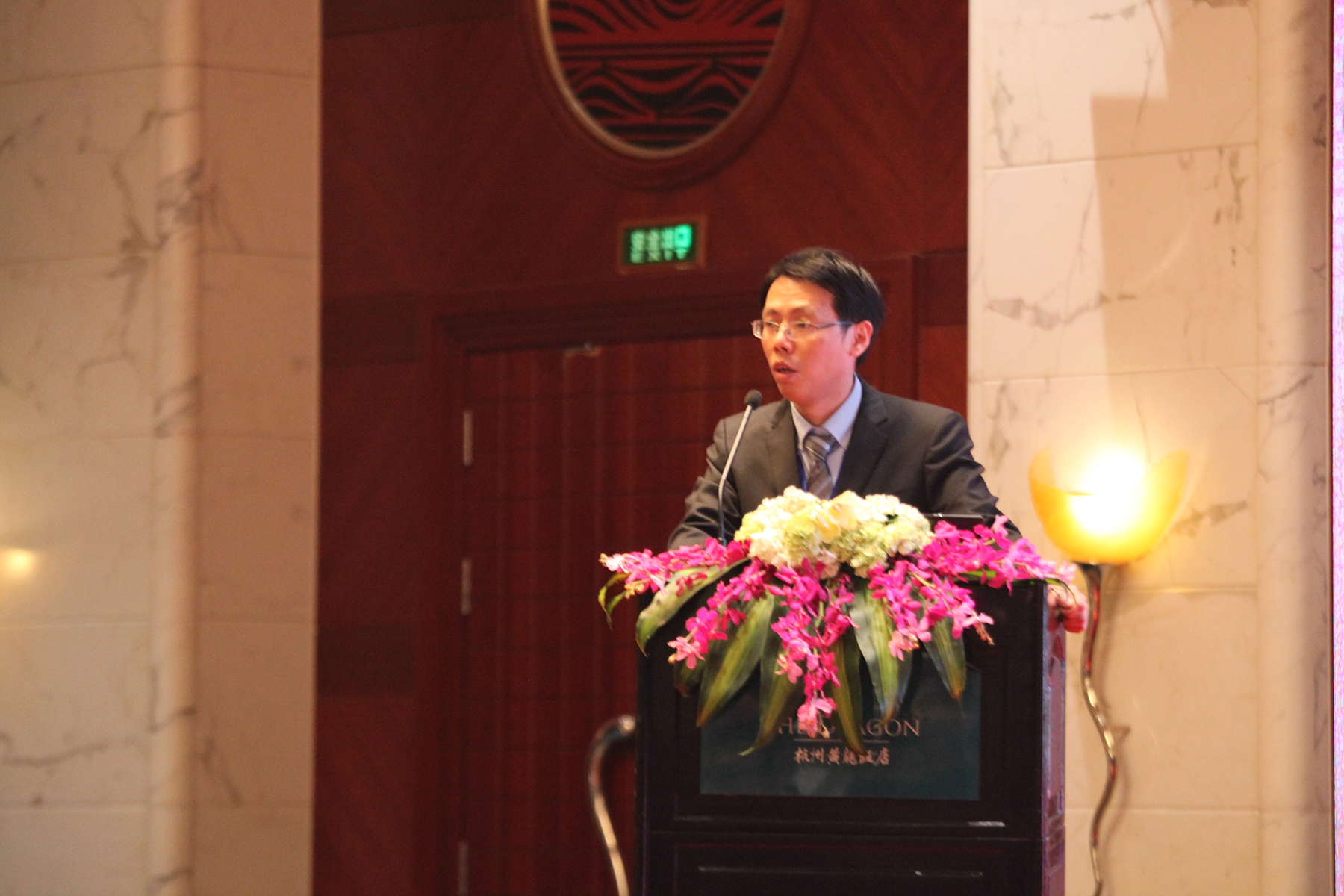
闭幕式主持人:邹俊教授
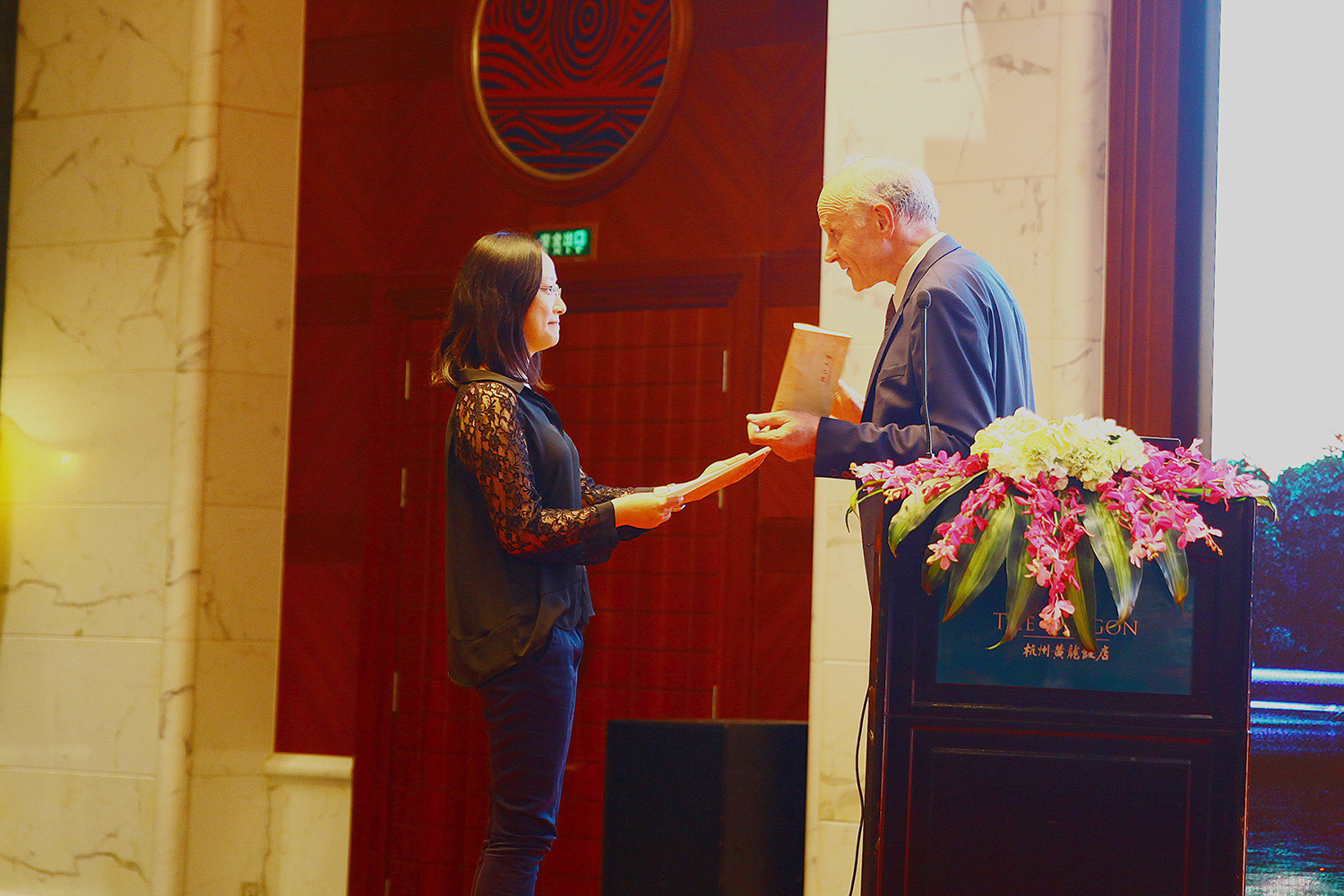
GFPS最佳论文奖合影
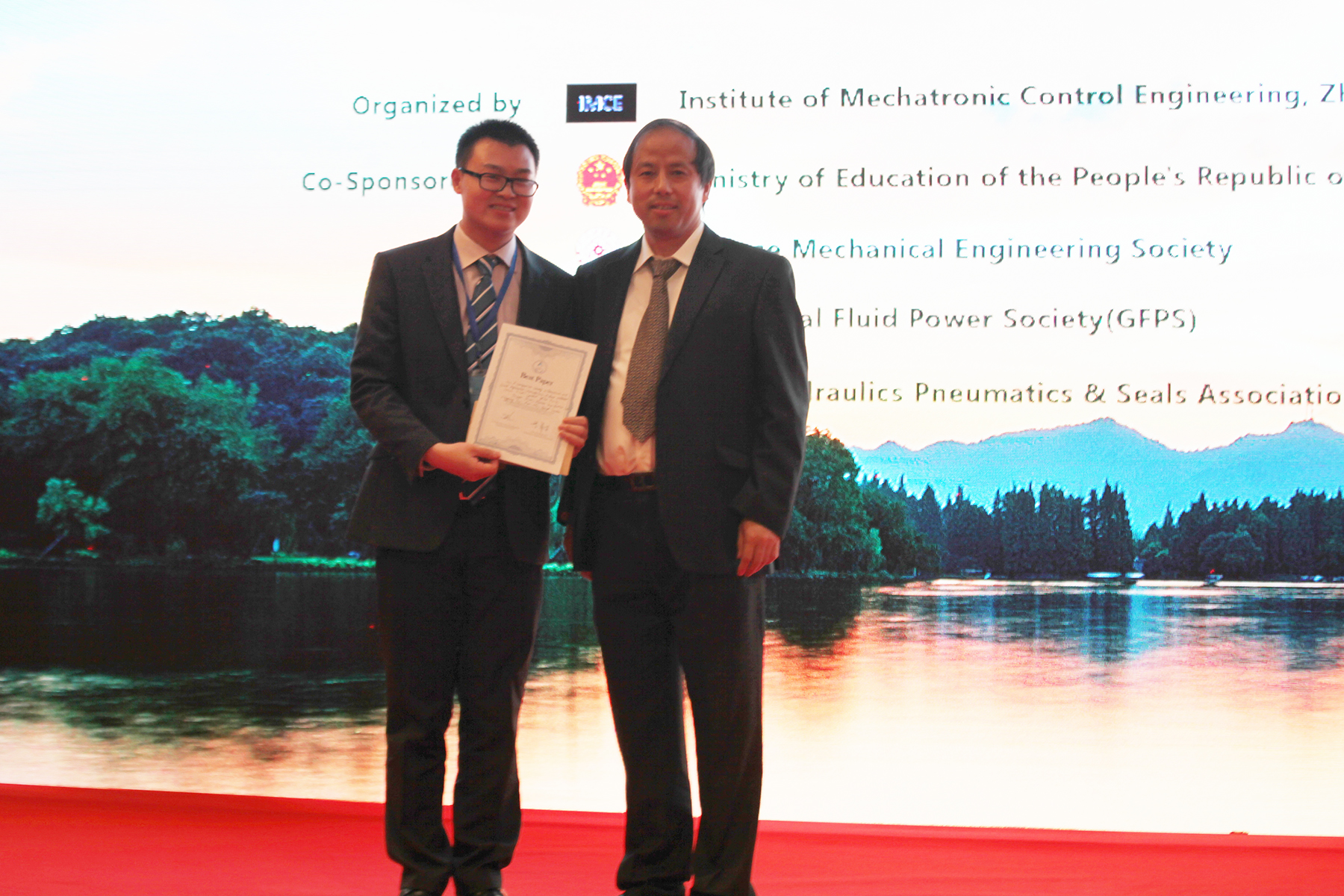
ICFO2017最佳论文奖合影
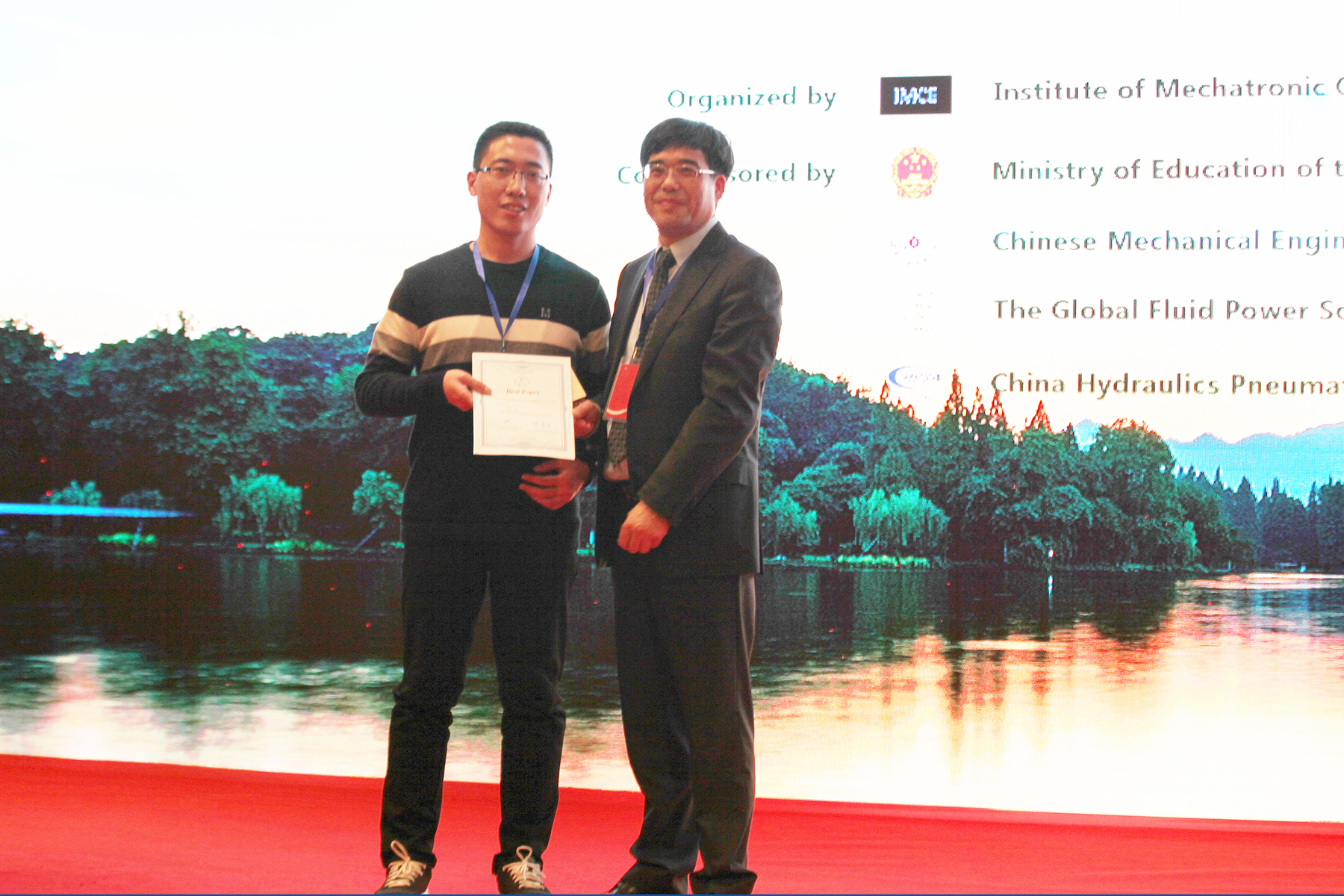
ICFO2017最佳论文奖合影
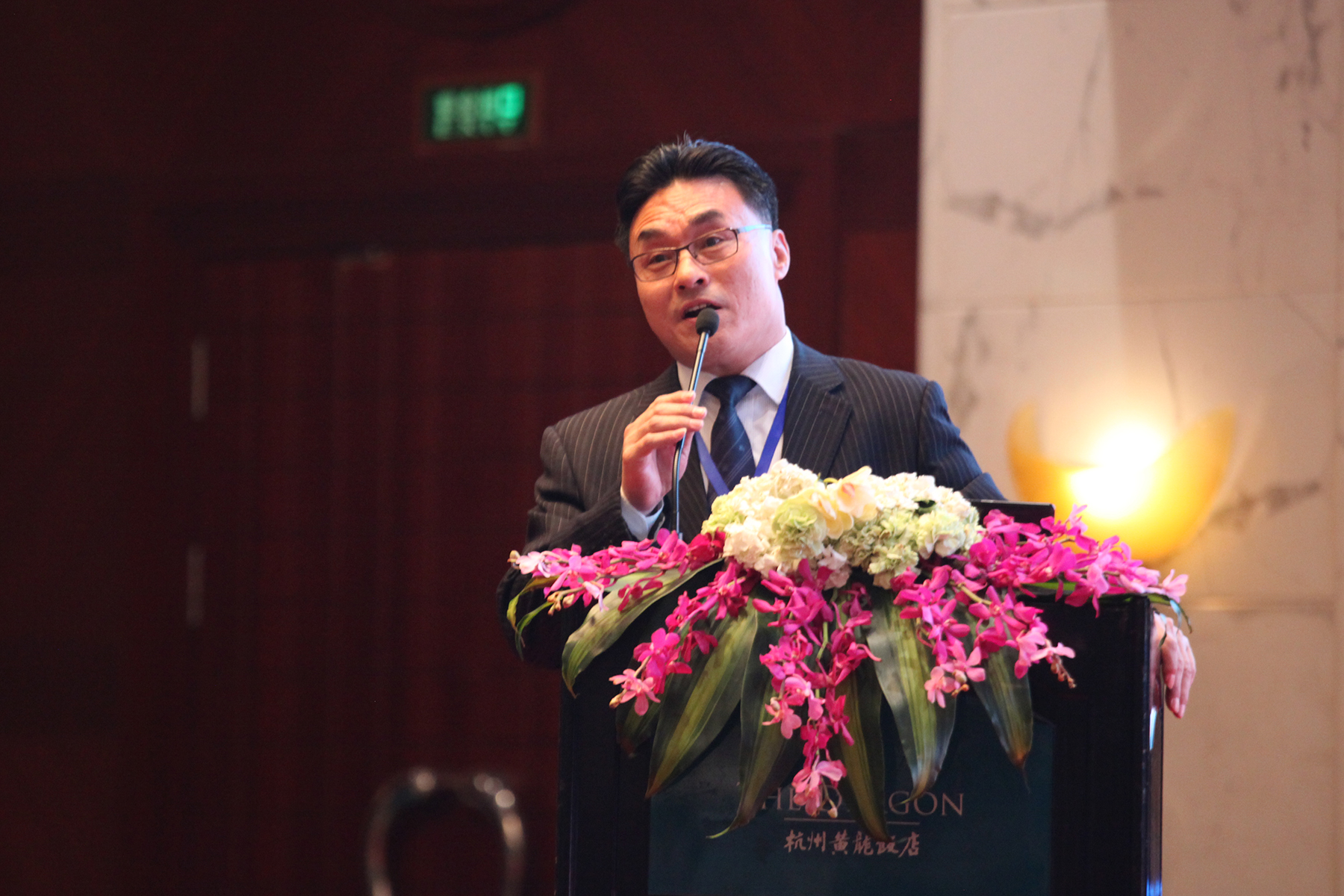
孔祥东教授介绍即将召开的流体会议
会议期间,参会代表还参观了浙江大学流体动力与机电系统国家重点实验室,与实验室教师和学生进行了交流。
大会报告听会特写
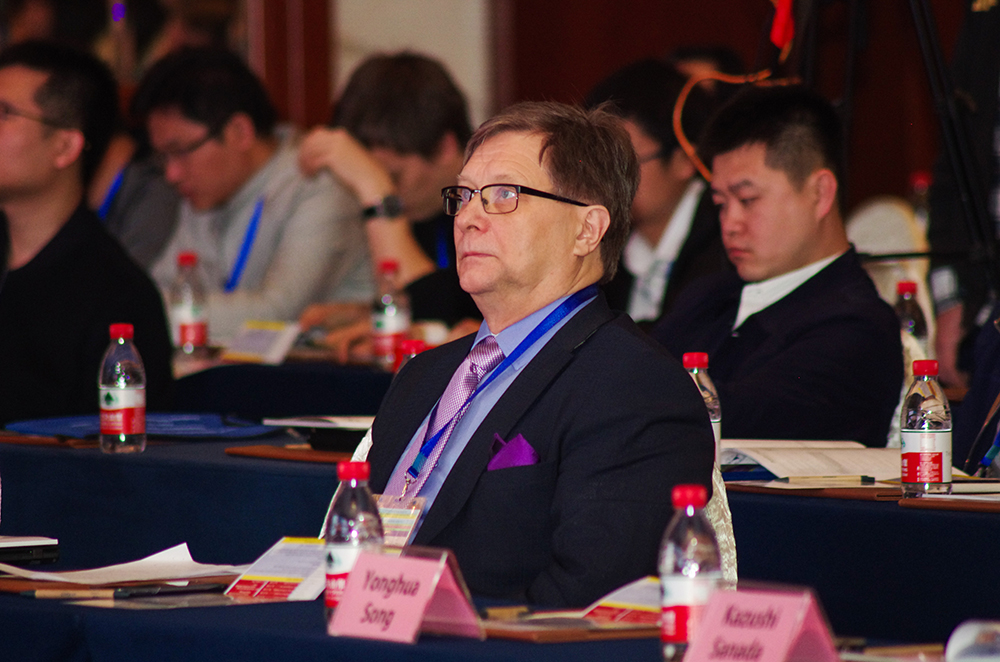
Kalevi Huhtala教授
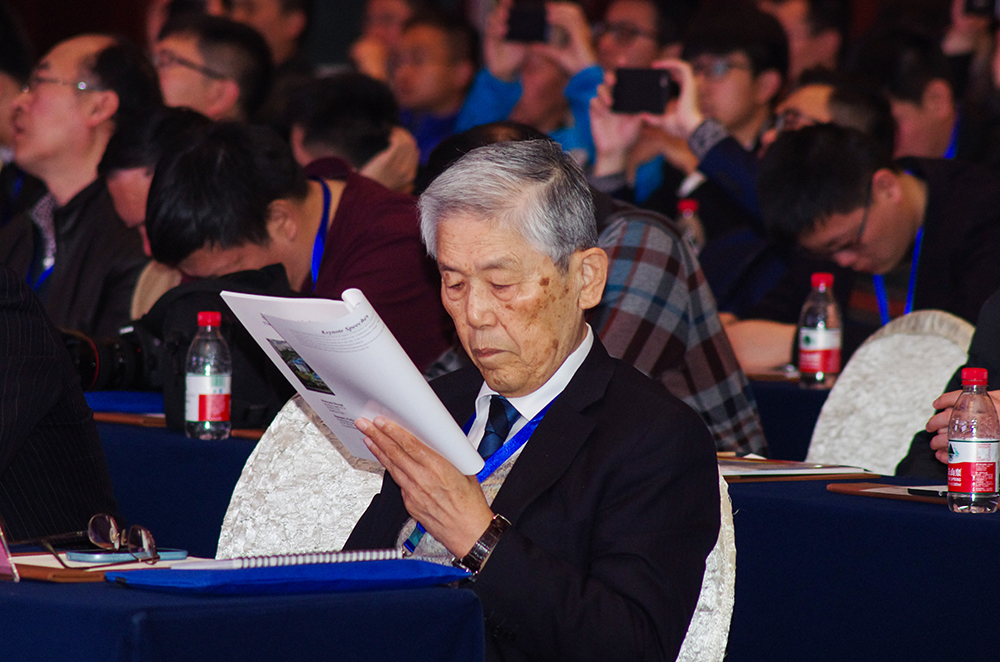
Ken Ichiryu教授
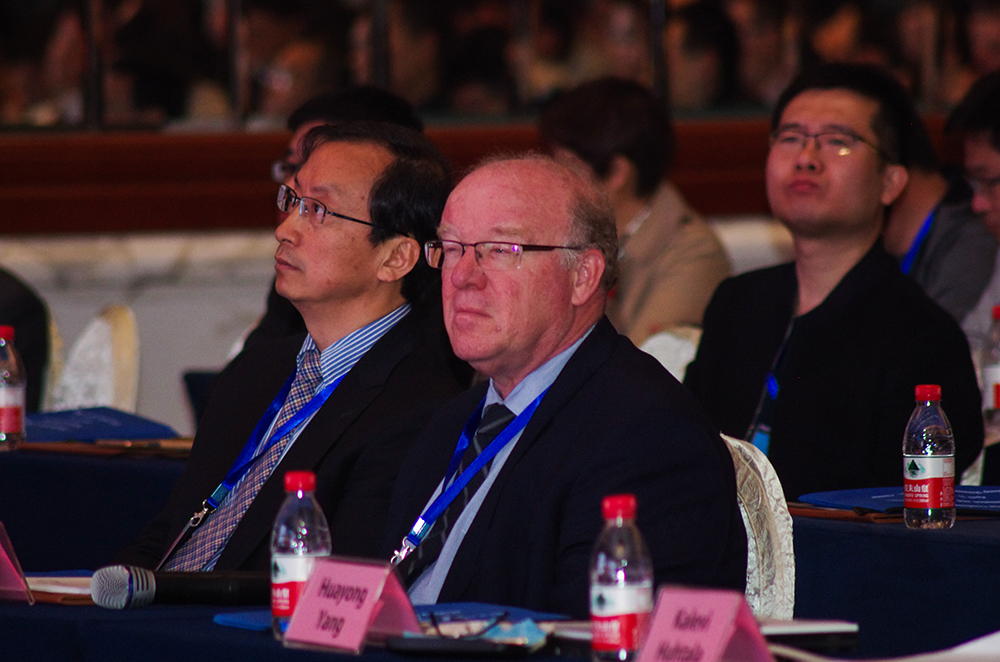
Kim A. Stelson教授

Petrov Alexey Igorevich副教授
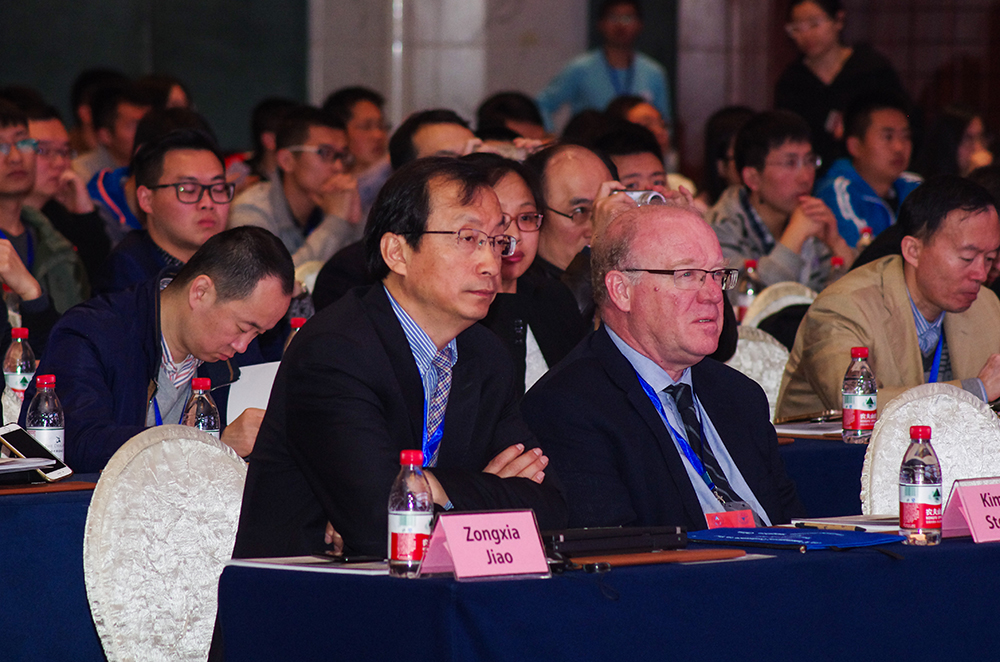
焦宗夏教授

孔祥东教授
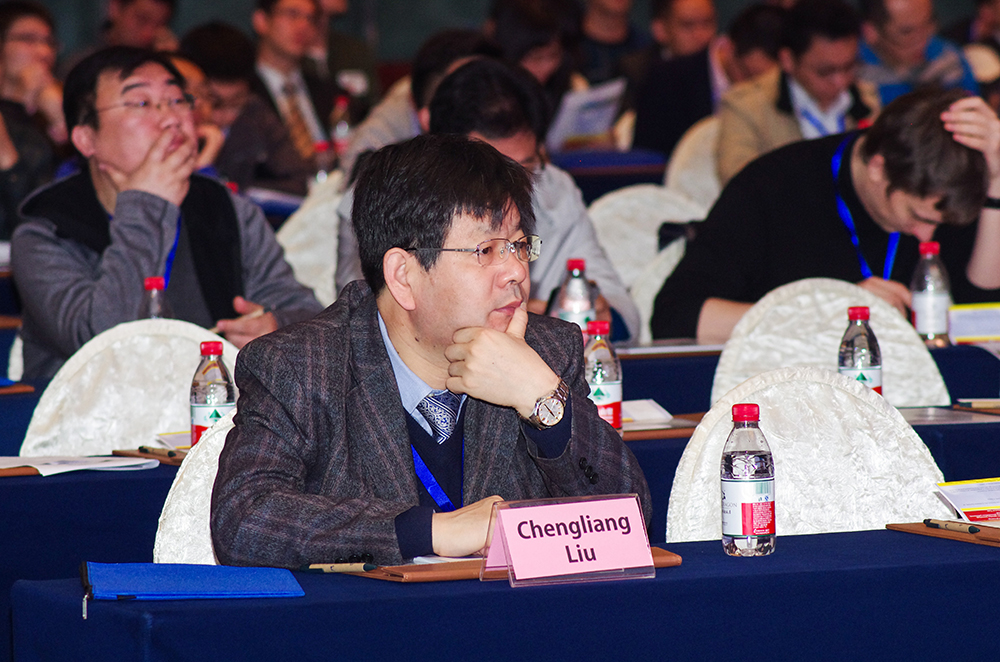
刘成良教授
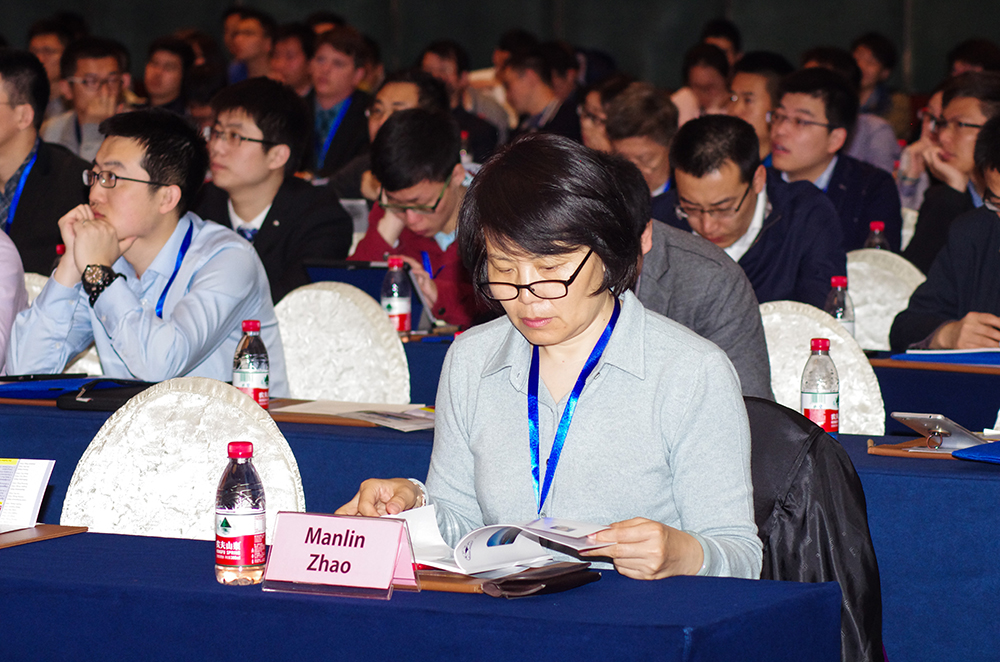
赵曼琳女士
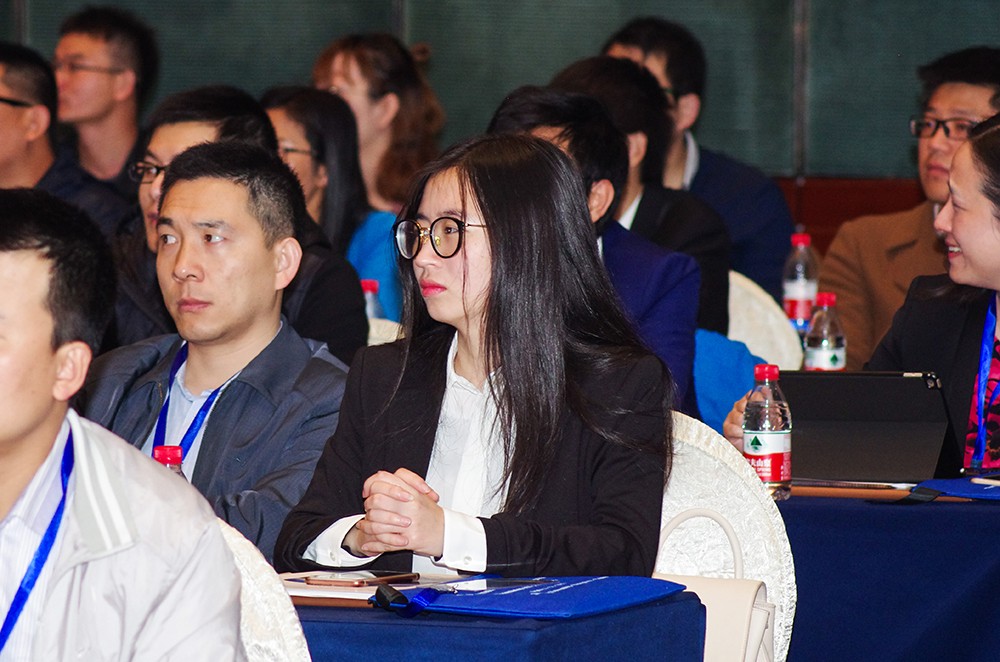
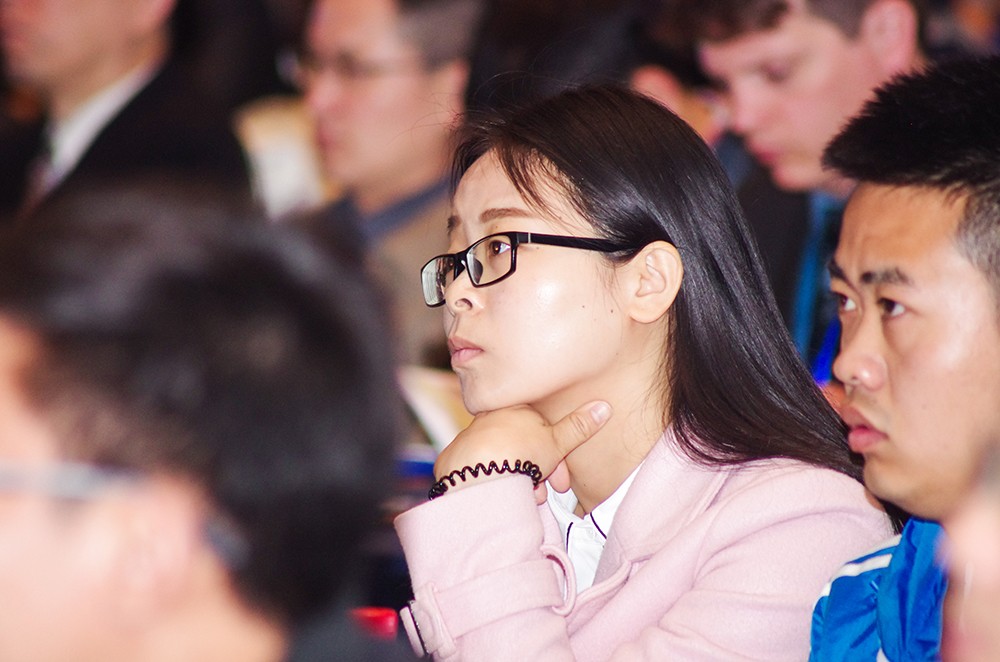
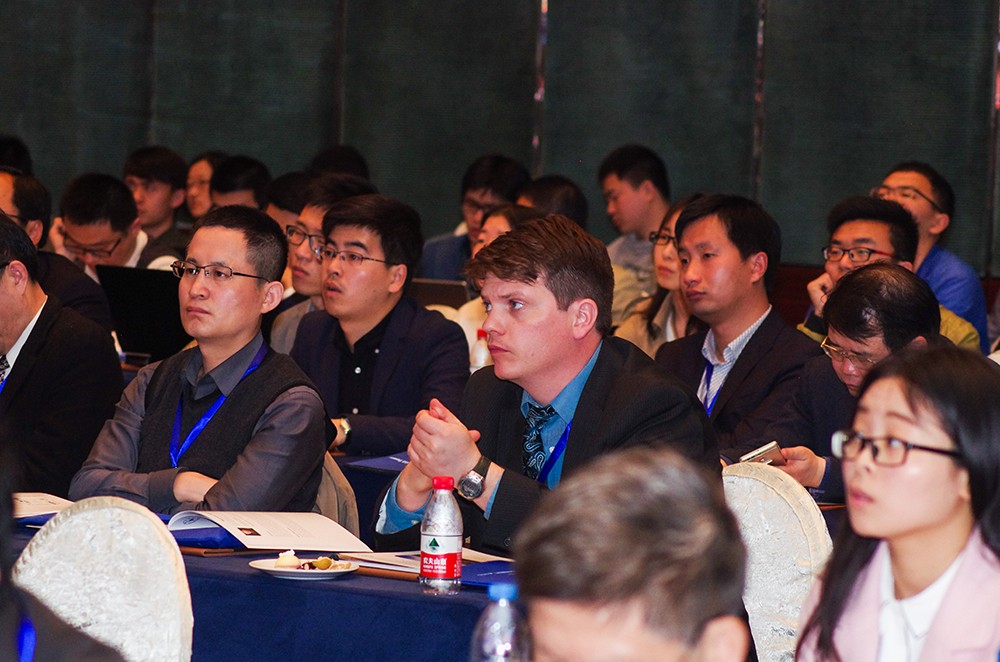
参会人员
大会报告问答环节
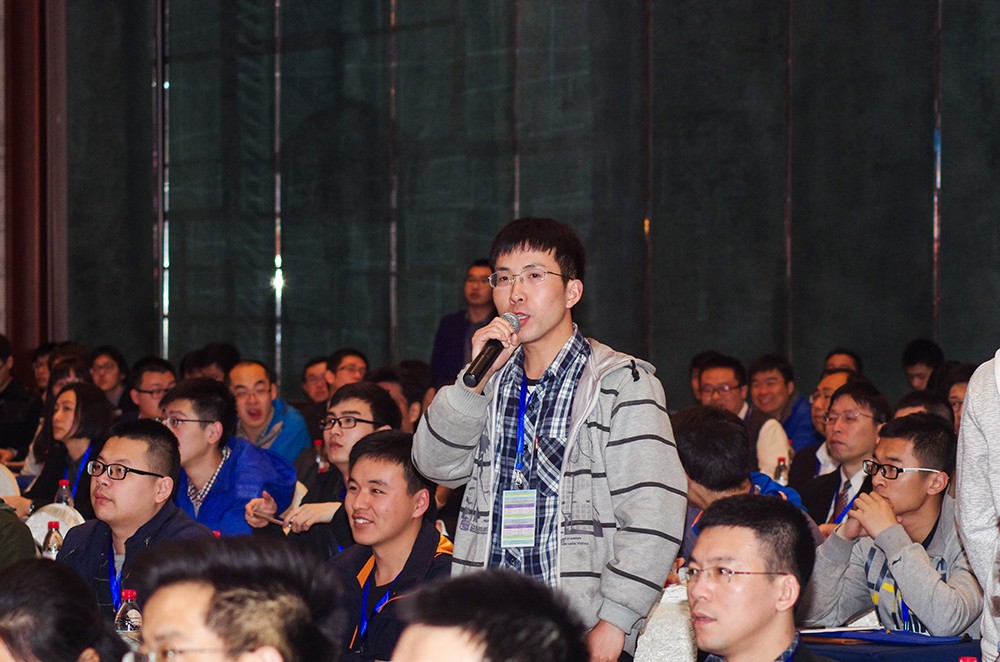

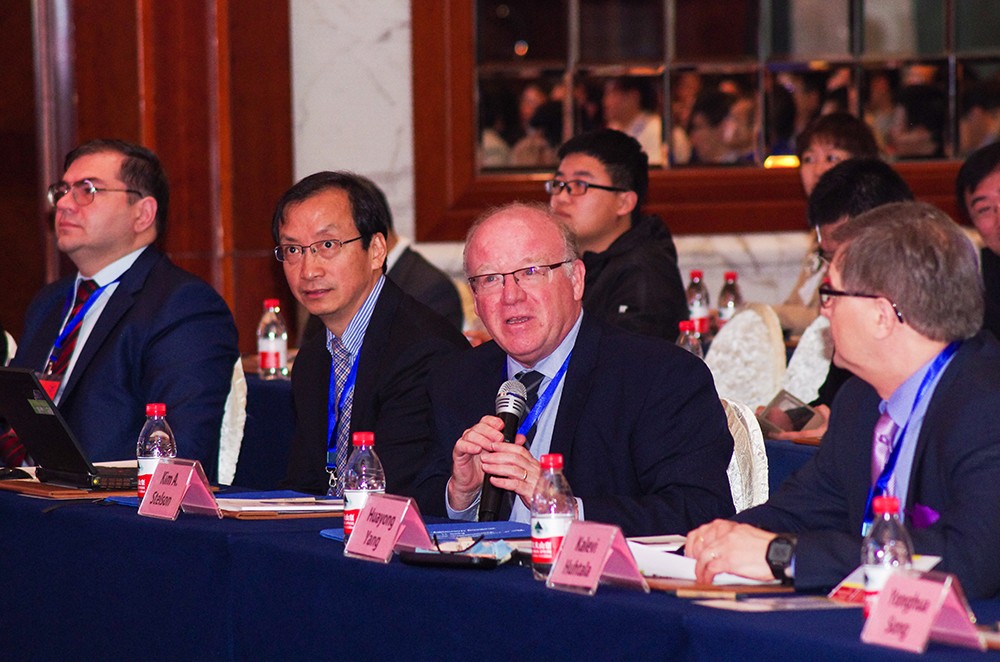
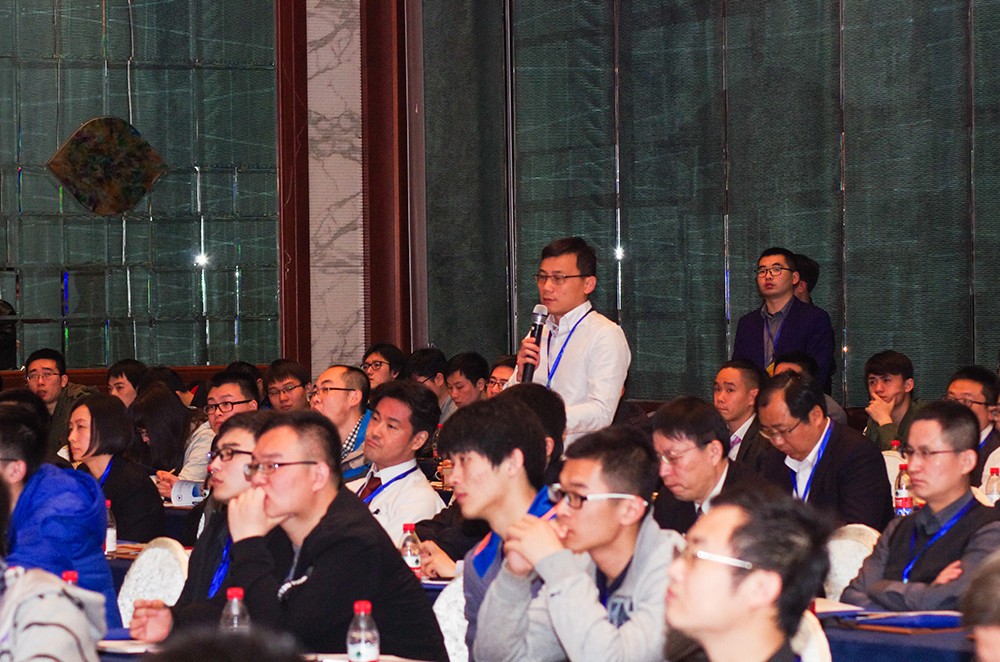
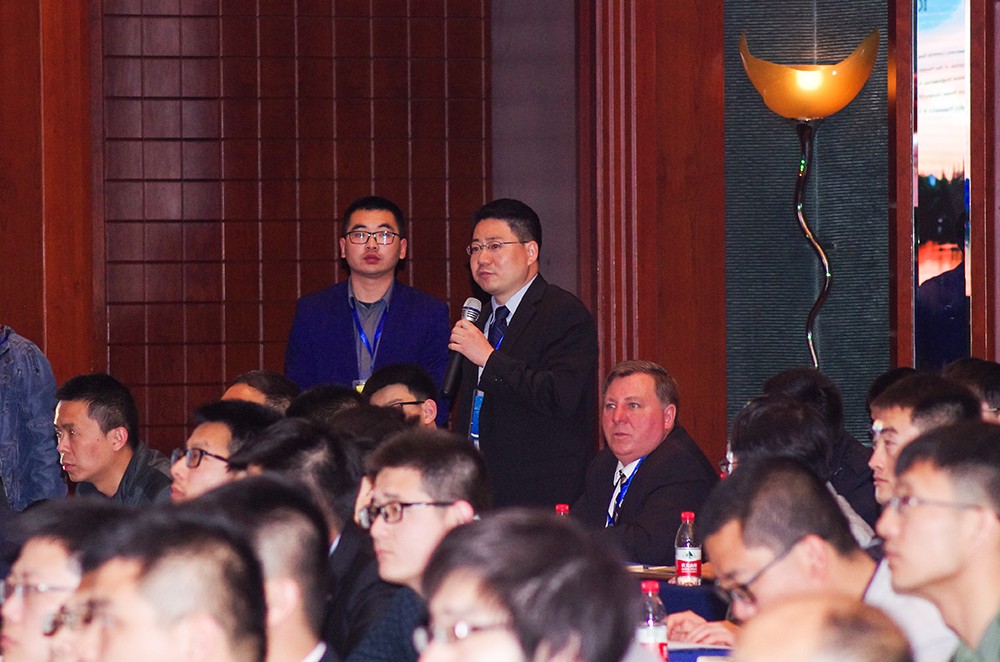
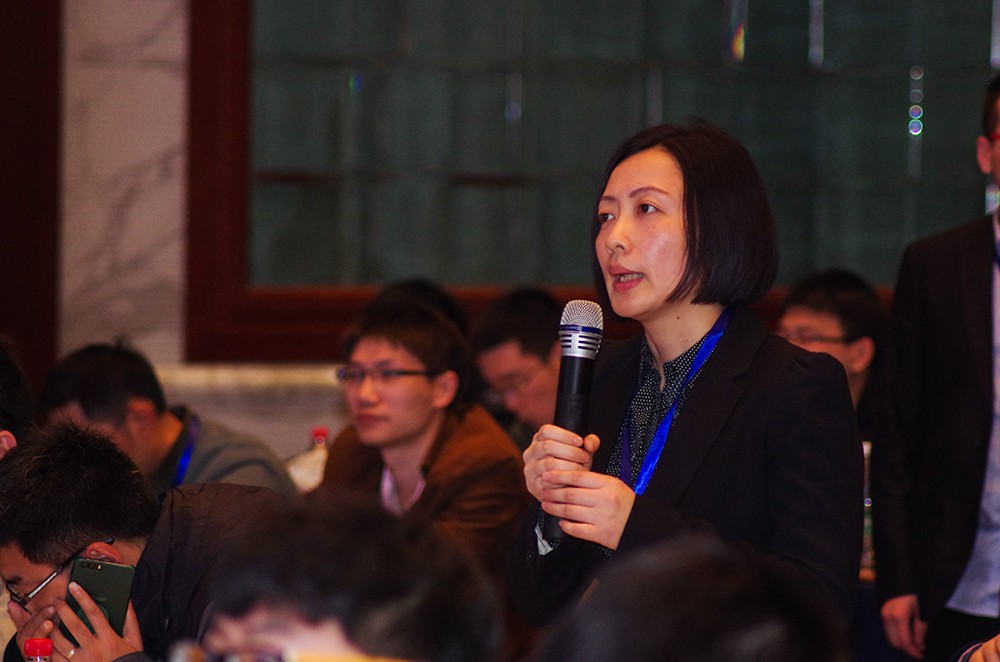
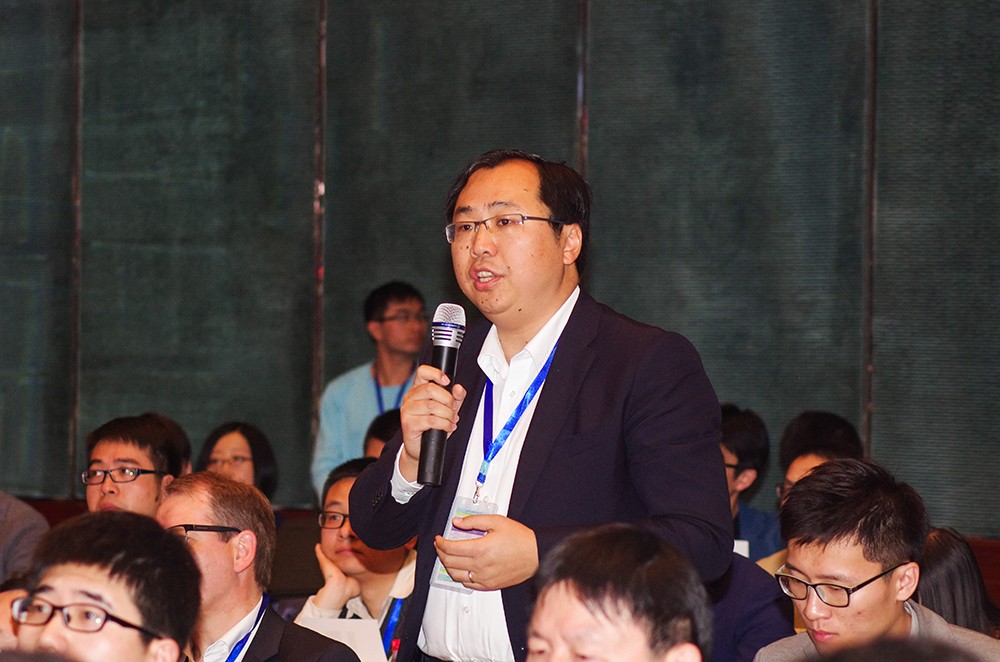
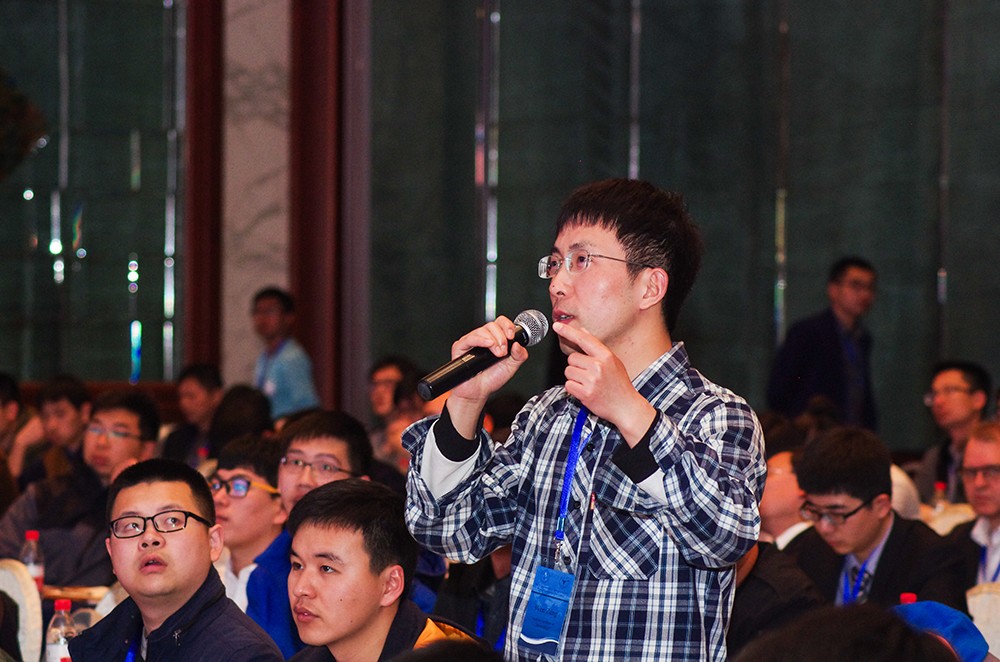
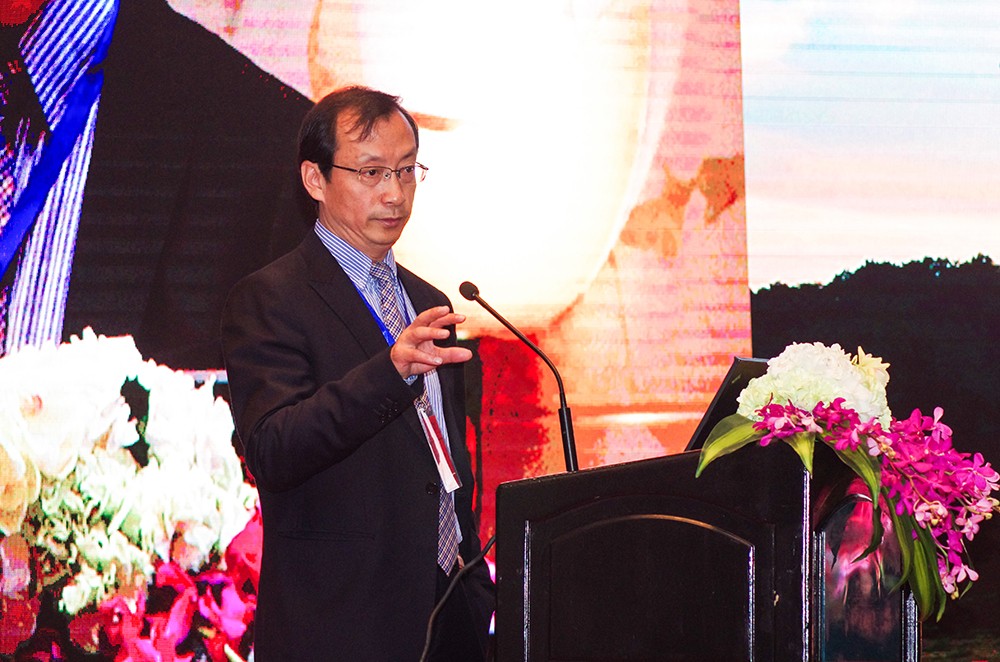
GFPS Best Paper Award
Title: Relay Control of A Morphing Tensegrity Structure with Distributed Pneumatic Actuation
Author: Guanyu Lai ( Univ. of Bath ), Andrew Plummer ( Univ. of Bath )
Abstract: It is believed that structures and actuation systems should be tightly integrated together in the future to create lightweight dynamic machines. This requires actuators to be distributed through the structure. A tensegrity structure is a very promising candidate for this future integration due to its potentially excellent stiffness and strength-to-weight ratio, and the inherent advantage of being a multi-element structure into which actuators can be embedded. In this paper, an antagonistic multi-axis control of a tensegrity structure is achieved, using a dead band controller. The controller is studied by the describing function technique, and a condition to guarantee stability is derived. The stability condition is illustrated with simulation and experimental results, and is used as a general rule to achieve stable control of the structure.
ICFP2017 Best Paper Award
Title: A Comparison Study on Structures and Fluid Dynamic Characteristics of Three Different Pilot-Control Globe Valves
Author: Jinyuan Qian ( Lund Univ.), Zhixin Gao ( Lund Univ.), Buzhan Liu ( Lund Univ.), Zhijiang Jin ( Lund Univ.), Zan Wu ( Lund Univ.), Bengt Sunden ( Lund Univ.)
Abstract: The pilot-control globe valve (PCGV) can use the pressure difference of a fluid itself for fluid control by a pilot valve with low driving energy consumption and quick response. In this paper, three different PCGVs are introduced with their structures and fluid dynamic characteristics. By comparing the stable valve core displacement of PCGV between the simulation and the experiment, the numerical method is validated. Then, with the three PCGVs models, the flow characteristics, the pressure difference between the upside and bottom of the valve core, between the inlet and outlet of valves, and the dynamic valve core movements are determined respectively. Furthermore, new applications of PCGVs are briefly introduced. This work gives an overall novel design introduction on PCGVs and it can be useful for someone who deals with quick response valve design at related industries.
Title: Characteristics of Cavitation in Tube
Author: Bo Li ( Zhejiang Univ.), Chen Ji ( Zhejiang Univ.), Jun Zou ( Zhejiang Univ.)
Abstract: The subsequent characteristics after cavitation bubble collapsed in a tube are investigated experimentally and emulationally. With the help of high-speed camera and COMSOL software, the interactions between primary bubble and secondary bubble in a tube are analyzed. Various behaviors of secondary cavitation are related to the primary bubble and surrounding restriction. It is found that the intensity of the secondary bubble clusters and their lifetime depend on the properties of tube including geometry and Young’s modulus. The relative position of secondary cavitation is related to the location of first bubble. Besides, collapse of large bubble produces large-scale area of secondary cavitation clusters. On the other hand, the energy distribution of secondary bubble clusters has a correlation with the Young’s modulus of tube. At last the state of two first bubbles collapse in a rigid tube simultaneously is studied, too.

